Scale of emissions data flaws exposed
Autofile reveals hundreds of problems raised with agency over accuracy of CO2 ratings on Rightcar
More than 300 complaints have been lodged with a government agency about incorrect carbon dioxide (CO2) data since the launch of the clean car discount.
Waka Kotahi has been required to review the fueleconomy figures of some 100 different models to see if rebates or charges apply to them, with the vast majority on the buying lists of used-car importers.
The car that has attracted the most complaints under the feebate scheme is the Toyota Aqua, which has numerous variants.
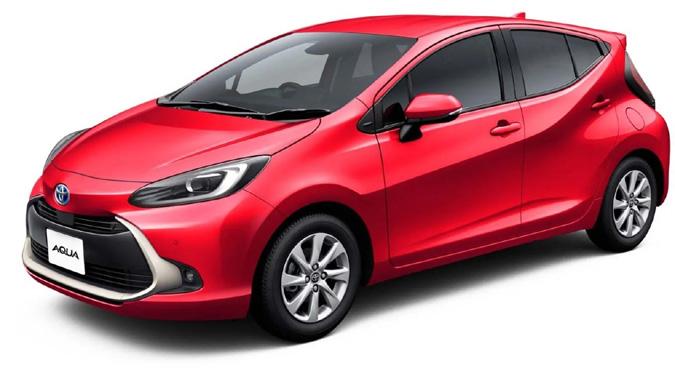
Problems experienced include buyers of this petrol hybrid being pinged with a fee instead of receiving a rebate despite it being a low-emissions vehicle.
The remainder of the top five models most complained about in the clean car discount’s first three months of operation were the Nissan NV200 and Note, and
the Toyota Raize and Corolla.
It’s not just the CO2 ratings of Japanese marques that have had issues raised on them, with dealers also taking umbrage with government figures concerning a host of European models.
These include the Volkswagen Golf, BMW 330e, i3 and 116i, Audi A1, A3 and Q5, and Mercedes-Benz GLC and C350.
As a result of complaints lodged with the transport agency, it refunded dozens of consumers between April 1
complaints
and June 30 because they were incorrectly charged.
The scale of issues with CO2 data on the Rightcar website are highlighted in statistics supplied by Waka Kotahi in response to an Official Information Act (OIA) request lodged by Autofile for the first three months of the feebate scheme.
During that period, the agency received 370 enquiries relating to incorrect emissions figures with 212 being made in April. Of those, 368 have been resolved with it
Clean
standard frustrates
GLOBAL VEHICLE LOGISTICS NZ - JAPAN - AUSTRALIA - UK - SINGAPORE OCTOBER 2022www.autofile.co.nz THE TRUSTED VOICE OF THE AUTO INDUSTRY FOR 35 YEARS [continued on page 4]
There have been many
about the Toyota Aqua’s CO2 data on Rightcar
car
Industry kept waiting for vital details of regulations p 9
VEHICLE SHIPPING
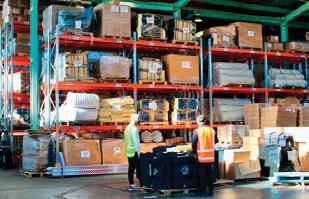
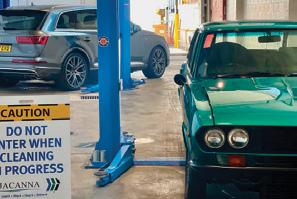
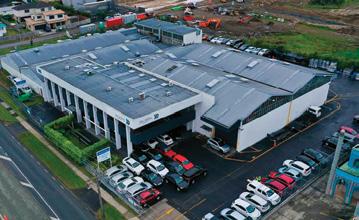
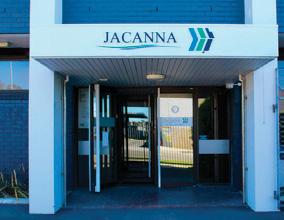
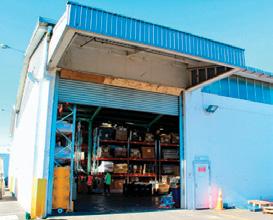

GENERAL FREIGHT
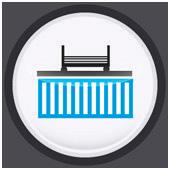


VEHICLE TRACKING




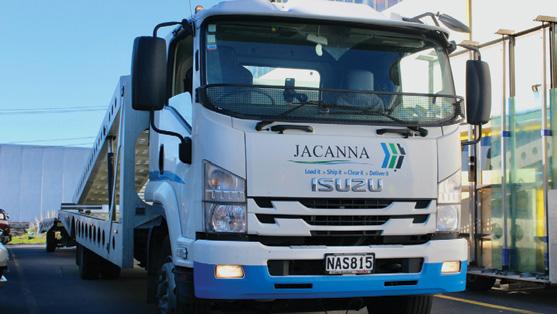
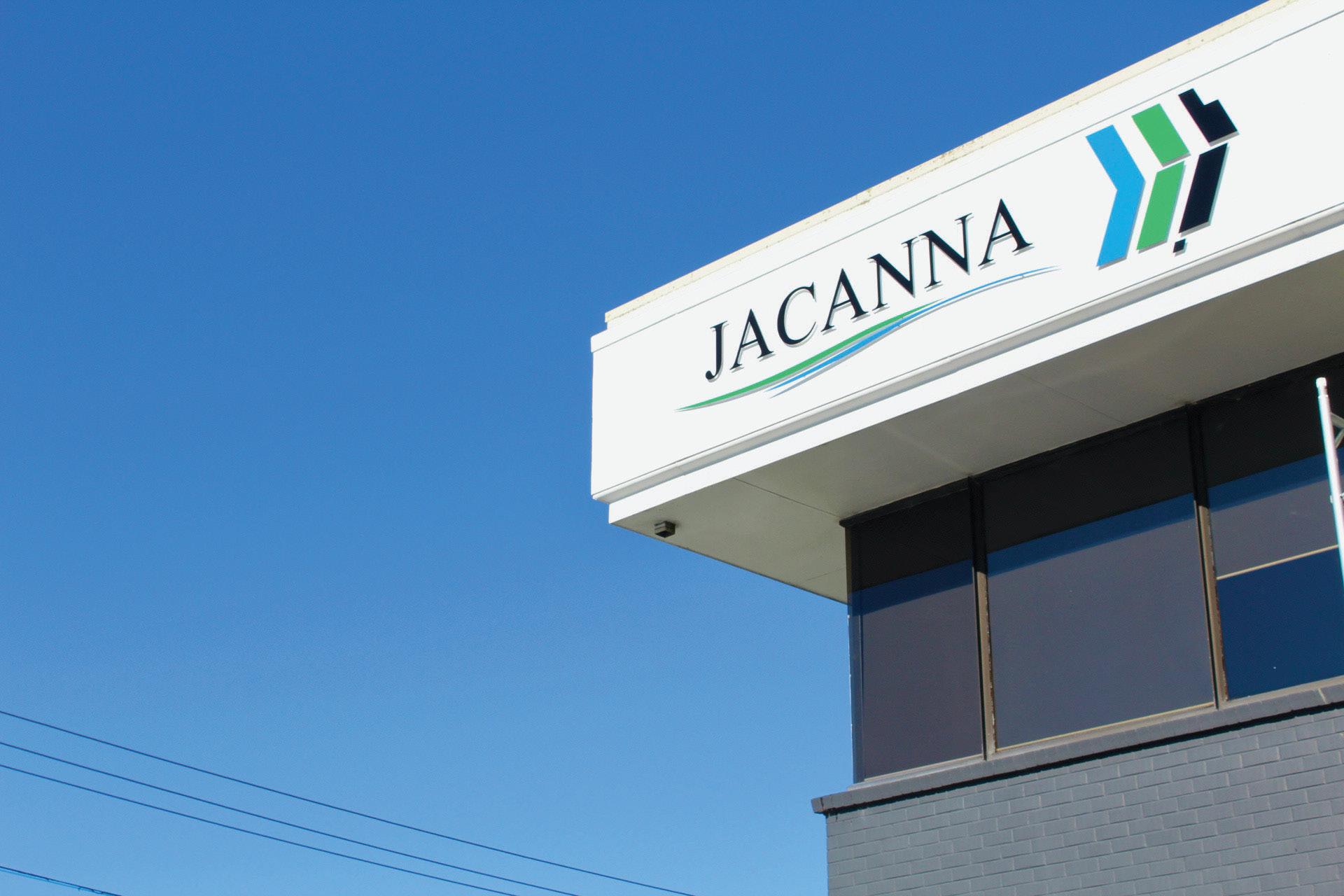

SHIPPING SCHEDULE
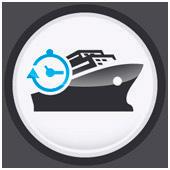
JACANNA.CO.NZ move to new, much larger premises means we are to offer even more services to our dealer clients BIGGER IS BETTER www.jacanna.co.nz Tel: +64 9 825 0888 Capping it all off is Jacanna’s SmartTrade Rewards Programme, you can earn points for almost any reward you choose to door ro-ro vehicle shipping from Japan and Australia Containerised vehicle shipping from anywhere in the world Vehicle tracking Approved MPI transitional facilities and cleaning services LOAD IT SHIP IT TRACK IT CLEAR IT DELIVER IT !
We are specialists in transporting and exporting all types of Vehicles, Commercial trucks, vehicles of Special Interest and other RORO Heavy Cargo & Machinery.
We have developed a worldwide network of Agents who understand the commitment required to service our demanding market.
Finding out where your vehicle is at any one time of the process, gives you the ability to manage the collection and processing of documents and payment on time.
TRS and shipping services from Japan to New Zealand. www.jacanna.co.nz info@jacanna.co.nz Tel: +64 9 825 0888 Terms and conditions apply.
Changes needed to ‘prescriptive’ regime
As I write, we are awaiting the second tranche of regulatory changes to the Credit Contracts and Consumer Finance Act (CCCFA) with the first – very minor – changes having been implemented in July.
Given the comprehensive review of the act and accompanying new regulations were only implemented on December 1 last year, it’s nothing short of extraordinary that a review was needed only weeks later and that consumer credit providers are now being faced with another set of such changes.
What’s so incredibly frustrating is that all of this could have easily been avoided had the government had even half an ear to the unintended consequences and poor outcomes clearly signalled to it by industry during the consultation process on the new regime.
Within the first three months of this year, FSF members reported the number of loan applications received had declined by 21 per cent, the number of applications they had approved had dropped by six per cent and the average time to make a decision had increased by 1.1 days.
August’s Centrix Credit Insights Report showed that new lending was down by a massive 40 per cent year on year.
There are obviously other factors at play that have led to this huge drop in new lending, such as record inflation significantly driving up the cost of living, but the CCCFA
bears much of the responsibility.
The statistics for motor-vehicle loans tell a similar story. Centrix data shows a drop in demand for such lending of nearly 20 per cent since January this year, while arrears on loans as of the end of August had jumped again for the fourth month running to 4.5 per cent. This is the highest reported level since early 2021.

It’s hoped further easing of the prescriptive CCCFA regulatory regime might reverse some of the restrictions on access to credit but, like anything, the devil will be in the detail.
The proposals announced last month by the Minister of Commerce and Consumer Affairs included narrowing the expenses required to be considered by lenders to exclude those deemed to be discretionary.

The problem officials are grappling with is what “discretionary” is. It would seem what I think is discretionary spending may be deemed by someone else to be entirely essential.
We saw more details as to how the proposed changes will be brought into effect in the regulations when an exposure draft was released on September 22. We’ve been given about a month to respond to these.
The final regulations will come into force from March 2023, so the CCCFA will continue to be the gift that keeps on giving for credit providers and car dealers alike for some time to come.


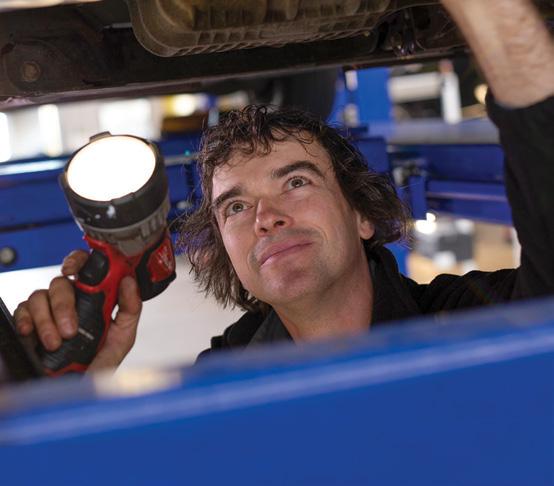
DIRECTORS
Brian McCutcheon
EDITOR
Darren Risby
JOURNALISTS
DESIGNER
Adrian
Entry Certification Specialists
www.autofile.co.nz 3 Vehicle Inspection NZ
• Entry Certification for imported cars • Vehicle Appraisals • Pre-Purchase Inspections • WoF • CoF • Road User Charges • Registration & relicensing • Exhaust emission testing 0800 GO VINZ VINZ.CO.NZ
Call Steve Owens now on 021 947 752 GUEST EDITORIAL
brian@autofile.co.nz ph. 021 455 775 Darren Wiltshire dazzz@autofile.co.nz ph. 021 0284 7428
Payne arpayne@gmail.com
ris@autofile.co.nz
Sue Brebner-Fox sue@autofile.co.nz Matthew Lowe matthew@autofile.co.nz MOTORSPORT Mark Baker veritas.nz@xtra.co.nz Autofile magazine is also available online as a readable file or downloadable as a PDF. Subscriptions are available at Autofile Online – www.autofile.co.nz Back copies are also available on the website. Copyright: Published monthly by 4Media Ltd All statements made, although based on information believed to be accurate and reliable, cannot be guaranteed, and no liability can be accepted for any errors or omissions. Reproduction of Autofile in print or digital format in whole or part without written permission, whether by copying or any other means, is strictly forbidden. All rights reserved. ISSN 0112-3475 (print) ISSN 2350-3181 (online)
LYN
McMORRAN Executive director Financial Services Federation Further easing criteria will boost lending for and sales of cars, argues Lyn McMorran
news
taking an average of nine days to close an enquiry.
By July 1, it had refunded fees in 32 instances when people were “incorrectly charged due to incorrect emissions data for a vehicle” with the total amount reimbursed coming in at $58,941.
The average amount of time it took Waka Kotahi to resolve issues when people were wrongly charged fees was 20 calendar days.
During those three months, the agency was unaware of any instances of incorrectly giving rebates under the feebate scheme, while the government holds no information on how many occasions it may have incorrectly classified that a light vehicle was “fee neutral”.
On top of all this, Waka Kotahi received 15 complaints about the administration of the clean car discount. Of those, five were about incorrect CO2 data. The remaining were related to fee and rebate enquiries, eligibility criteria and application issues.
Top models for CO2 complaints
The agency’s OIA reply states:
Rightcar website can be used to check whether an estimated fee, zero band or rebate is expected.
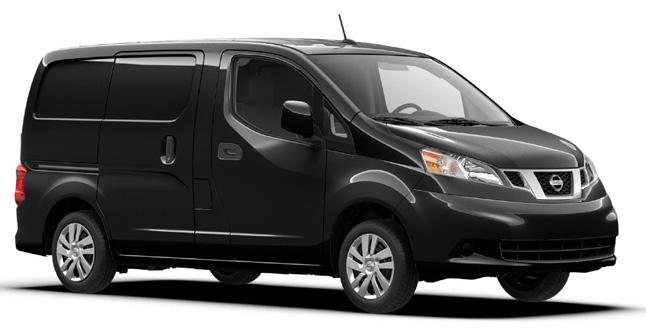
these are estimates until the point of registration.”
SCALE OF SITUATION
accessed by Autofile shows how officials have reacted to problems with the clean car discount and Rightcar’s CO2 ratings system post-launch.
email was issued on April 8 by ministerial services in response to enquiries about errors with the feebate scheme.
“Overall, the system is running well,” it states. “We’ve had some minor bedding-in issues with the transition to rebates and fees based on CO2 emissions as expected with any new process. These are isolated issues.
“We knew and acknowledged the historical data had some glitches, hence the VEED [Vehicle Efficiency and Emissions Data] Rule was developed to enable
Extent of
Many dealers have raised concerns about CO2 ratings on Rightcar, and the sheer number of different vehicles with inaccurate or incomplete emissions data sets illustrates the scale of the issue.
As well as models attracting eight or more complaints, those listed below were complained about between April 1 and June 30.
Seven complaints were raised about the Nissan X-Trail during that period, there were six concerning the Subaru XV, and Toyota RAV4 and Camry, and five about the BMW 330e and Ford Focus.
a hierarchy of testing cycles to calculate the CO2. We have a process we’ve shared with industry for them to request a review of the CO2 if they think it’s incorrect.
“The majority of issues are with used vehicles imported from Japan, which have multiple levels of sub-models that require manual checks. Our key messaging to industry has been to contact us as soon as they have a question so we can work with them to resolve the issue.”
The agency’s internal email of April 8 explains there have been some instances when dealers might have been supplying incorrect and or incomplete data, “which could result in the wrong CO2 and, therefore, the wrong rebate or fee could be calculated, others where the source data is incorrect”.
It adds: “We are working to resolve these issues as they are identified and to apply long-term fixes where required.”
Just three days later, on April 11, the situation was such that an investigation into Waka Kotahi’s data was required. This came to light when the agency was asked to “provide an update regarding
Those with four complaints were the Audi A1, Suzuki Swift, Toyota Prius and Volkswagen Golf.
Three complaints were lodged about the Audi Q5 and A3, BMW 116i, Fiat Ducato, Honda Fit, Lexus RX 450h, MercedesBenz GLC, Nissan Juke, Subaru Impreza, Toyota RAV4, GR86 and Wish, VW Tiguan.
There were two complaints about the Audi A6 and SQ2, BMW i3 and 320d, Chevrolet Sonic, Daihatsu Hijet, Ford EcoSport, Mazda CX-30 and Demio, Mercedes-Benz C350, Nissan AD, Serena and Vanette, Subaru Outback, Toyota Corolla, Sienta and Yaris.
complaint was made
4 www.autofile.co.nz
[continued from page 1]
One
problem If you are a forward thinking motor vehicle trader, or financier, looking for a trusted vehicle insurance partner, call Quest. Contact: Simon Moore 021 149 2266 SimonM@questinsurance.co.nz QUEST INSURANCE OFFERS: an independent choice Mechanical Breakdown Insurance – backed by AA Roadside Assist Comprehensive Motor Vehicle Insurance Lifestyle Protection Insurance Credit Contract Indemnity Insurance Mechanical Breakdown Insurance for Electric and Hybrid Vehicles Guaranteed Asset Protection Insurance This table shows the most-affected models as identified by Waka Kotahi for having enquiries made about possible inaccurate or incomplete emissions data sets for the purposes of the clean car discount between April 1 and June 30, 2022. This information was supplied to Autofile following an Official Information Act request.
1 Toyota Aqua 29 2 Nissan NV200 21 3 Toyota Raize 19 4= Toyota Corolla 17 4= Nissan Note 17 6 Renault Lutecia 13 7 Toyota C-HR 11 8= Mazda Axela 10 8= Toyota Prius 10 10= Lexus CT 200h 8 10= Mitsubishi Outlander 8 10= Toyota Alphard 8
“The
However,
Correspondence
An
There were 21 complaints about data for Nissan’s NV200 from April 1 to June 30
errors” with the feebate scheme.
By noon on that day, “some 113 vehicles had not been registered so no fees were paid, which required a manual review of the CO2 data”.
By then, the agency was also aware of three cases of petrol hybrids that had been registered, which should have received rebates but were charged fees.
The dealer registered them and paid the fees so customers could take possession of the vehicles. Waka Kotahi was then contacted to look into the emissions data.
The email states the agency determined fees were charged in error, refunded them and advised the customer to apply for a rebate.
COMPLAINTS ‘UNACCEPTABLE’
The Imported Motor Vehicle Industry Association (VIA) is “unsurprised” there were 370 complaints in the first three months of the full clean car discount scheme and that Waka Kotahi has had to issue refunds.
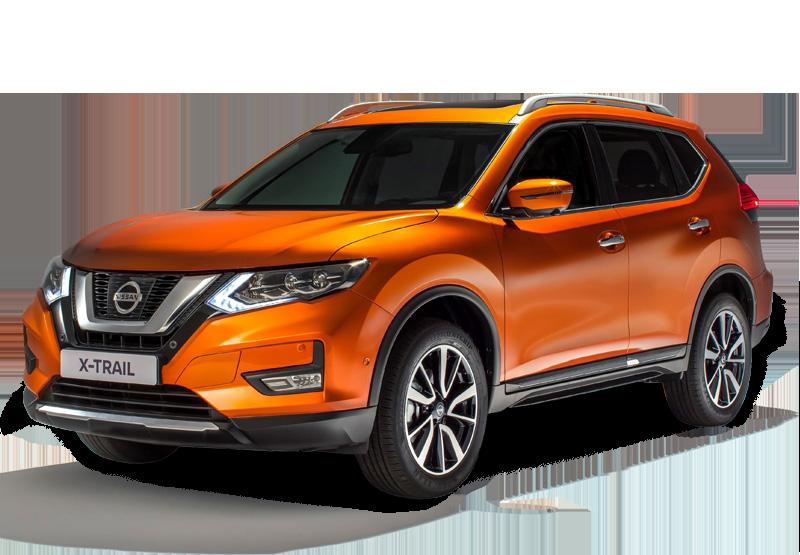
Kit Wilkerson, head of policy and strategy at VIA, which has withdrawn its support for the government’s clean-vehicle policies, describes the transport agency taking an average of 20
‘process’ is not fit for purpose and has led the industry to stop making complaints.
“As for most of the issues with the scheme’s CO2 ratings having affected used Japanese imports, we warned the agency that would be the case.
“It has built its vehicle identification tool on top of the motor vehicle register [MVR], which is a mess.
“New vehicles cannot have wrong CO2 values because what manufacturers declare is – by Waka Kotahi’s definition – correct.”
VIA reiterates its view that the government can fix issues centred on emissions ratings by establishing a data look-up and vehicle-matching tool “that’s built on a better data source”.
Wilkerson says: “However, we recognise the government doesn’t see that as its responsibility – the VEED Rule clearly states it is the importer’s responsibility to provide this information.
“Unfortunately, this leaves importers in the impossible spot of trying to source the information from manufacturers that do not support competition from parallel importers.”
The September 2022 issue of Autofile reported on a government official saying the clean car data “works well”
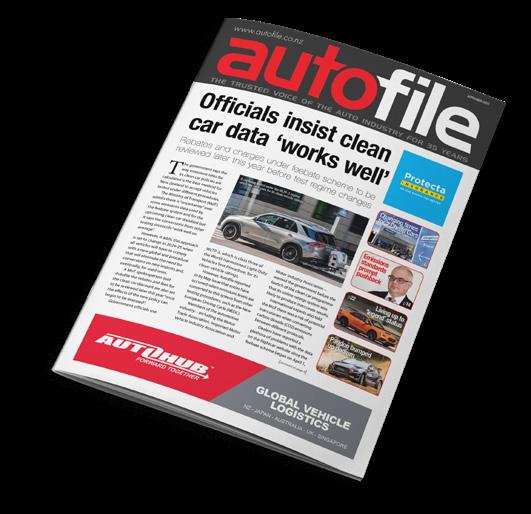
when the clean car standard is launched next year, “because while the industry has stopped complaining about issues affecting customers, we expect the industry to object when it’s their money”.
The association says it has received no feedback from the Ministry of Transport (MoT) or Waka Kotahi on its decision to withdraw support for the government’s clean-car policies some two months ago.
Wilkerson
adds: “Beyond Michael Wood, the Minister of Transport, expressing his hope that we continue to work constructively with his officials, our specific and stated concerns haven’t been raised by the government.”
Within hours of VIA’s announcement of July 27, Wood issued a statement describing the feebate scheme as a “huge success” and said the association’s views on reducing light-transport emissions remain important.
“I continue to engage with VIA and have asked senior officials at Waka Kotahi to commence an assessment of concerns they have raised to determine if we can iron out any remaining obstacles,” the minister said.
“I’m confident that, for the majority of Kiwis, the clean car discount is working as expected with correct rates charged. For those who have faced issues, Waka [continued on page 6]
Alpine A110, Audi A7, A4 and SQ8, BMW X2, 120i, 118i, M Sport Auto, 323i, M4, X1, X3, 420i and 530e, Ferrari F8 Tributo, Fiat 500, Ford Fairlane and Fiesta, Honda CR-Z, Hyundai Accent, Jaguar XF and F-Pace, Kia Carnival.
Lexus CT 200, ES 300h, GS 450h, LS 500h and NX 300h, Mazda 2, Biante, MX-30, RX-7, 3, Atenza, CX-3 and CX-5, Mercedes-Benz
and S350, MG5, Mitsubishi ASX, Galant and Lancer.
Nissan Lafesta, Leaf, March, Tiida, Wingroad, NV150, NV350 and Pathfinder, Peugeot 207 and Boxer, Porsche Cayenne, Subaru Forester, Toyota Estima, Highlander, Camry, Vitz, Spade, Harrier and Hiace, Volvo V40, XC40 and XC60, Volkswagen Beetle and Passat.
www.autofile.co.nz 5 Contact us today 09 966 1779 www.jevic.com SP E C I A L IS T S I N PRE‑SHIPMENT INSPECTIONS MPI biosecurity inspections Biosecurity decontamination Heat treatment NZTA border inspections Odometer verifications Pre-export appraisals ? Lost documentation reports
t news
Kotahi has worked with them to resolve the issues.”
Wood has conceded that, as with any new policy, there have been some “teething issues” with the implementation of the feebate scheme.
“However, it’s important these are in seen in the wider context. In its first year, the clean car discount has proven a huge success with more than 57,000 light electric and non-plug-in hybrid vehicles registered, resulting in significant emissions reductions across cars coming into New Zealand.
“It has also clearly influenced importers of vehicles, who in many cases have been importing loweremitting vehicles into the New Zealand market to meet demand. This is the scheme working, as it is meant to, to clean up our fleet.”
Autofile contacted the MoT, Wood’s office and Waka Kotahi on September 20 to see what stage the transport agency’s assessment was at, and if any issues highlighted by VIA have already been investigated or addressed.
A reply received three days later from a spokesman for Waka Kotahi states: “Senior officials met with VIA to hear the concerns they had raised. Largely, VIA’s concerns were based on the perceived inaccuracy of the Waka Kotahi data facility.
“Waka Kotahi carried out visits with dealers and importers selected by VIA, and found no evidence of inaccuracies.
“It was also agreed that Waka Kotahi would carry out auditing on VIA source data for vehicle

From April 1 to June 30, the transport agency was unaware of any instances of incorrectly giving rebates under the feebate scheme
Waka Kotahi refunded fees totalling $58,941 in 32 instances under the clean car discount between April 1 and June 30 due to “incorrect emissions data for a vehicle”
“flawed” database stepped up after having sales collapse because the website has wrong emissions figures for many vehicles.

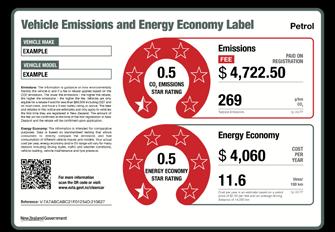
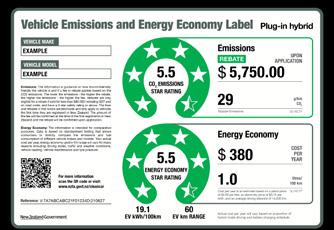
Feringa, director of Select Autos Tauranga, had to refund a customer who had bought a 2013 Subaru XV after they were facing a $2,371 penalty. He expected it to fall into the zero band.
The deal came unstuck after it took three weeks to get its Rightcar data corrected by the transport agency.
The government holds no information on how many occasions it might have incorrectly classified that a light vehicle was “fee neutral”
CO2 calculations. Waka Kotahi is in the process of auditing the VIA data sources in order to assess the viability of adding this data.”
Meanwhile, the Motor Trade Association (MTA) has been busy fielding enquiries from its members about issues with the agency, the Rightcar website and incorrect CO2 data.
Tony Everett, sector manager –dealers, says: “We always knew the problem was greater than Waka Kotahi admitted publicly at the time the clean car discount came into force.
“From day one, we’ve heard of vehicles that should have been getting rebates being hit with fees – and vice-versa. We’re still hearing those reports from our dealer members.”
Everett points out the feebate scheme has been a substantial
piece of work “to be fair” and some minor errors were understandable.
That said, the number of complaints detailed in the reply to Autofile’s OIA request confirm problems are widespread and “more than just ‘bedding in’ issues as described by Waka Kotahi”.
Everett says the main thing now is to ensure that no one is left out of pocket. “We would expect Waka Kotahi to make absolutely sure no consumer has paid a charge they didn’t need to and, if they have, make it good.”
FEEBATE SYSTEM ‘FLAWED’
Elliot Feringa is one of many used-car dealers to have contacted Autofile since the launch of the clean car discount to express his frustrations about it.
He wants action by Waka Kotahi to fix problems with Rightcar’s
“I feel that as an industry we have rolled over and taken this, especially as the problems don’t appear to be fixed after more than a couple of months,” says Feringa.
“It’s been taking weeks to resolve inaccurate information about fees or rebates. That kind of delay needs to be fixed quickly. It’s time to say enough is enough.
As an industry, we haven’t pushed back and voiced our dissatisfaction loudly enough about how poorly executed this scheme is.
“We have the right to base buying decisions on information available to us. When that information is subject to change and without any recourse, it adds unnecessary uncertainty and potentially unexpected costs.
“Through no fault of our own we’re having to unwind deals. That’s unacceptable and we should be voicing our concerns about it.”
Feringa received another surprise when he went to register a 2018 Lexus IS 300 sedan and found it attracted a fee, despite it being what he describes as
Different issues with new vehicles
David Crawford, chief executive of the Motor Industry Association, describes Waka Kotahi’s manual review of the CO2 data as “not an unexpected outcome” when it comes to used-imported vehicles.
“Problems with the clean car discount are almost solely related to used imports and have arisen because of a lack of compliance data for vehicles in their source
markets,” he told Autofile.
“The new-car sector is very much of the view that what we do is within normal variances.”
As for the impact of inconsistencies with emissions ratings when it comes to the launch of the clean car standard, Crawford believes the situation will continue to be “problematic” for
the used-imports sector.
“As for the new-car sector, our problems stem from other issues. These are mainly that the transport agency’s portal for tracking CO2 will not be fully automated come December 1 when we need accounts set up and need to start tracking pre-delivery inspection
[PDI] dates in the MVR.”
Crawford explains that the point of obligation is when the vehicle is certified for entry into service. For the clean car standard, this will be when the PDI date is loaded into the MVR.
“With the system not being fully ready, we will want to ensure any vehicles we PDI ahead of January are recorded and those that we PDI in January need to be recorded accurately.”
[continued on page 8] news [continued from page 5]
David Crawford
6 www.autofile.co.nz
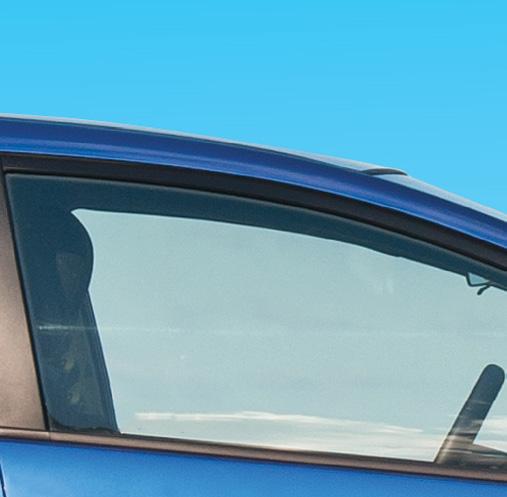

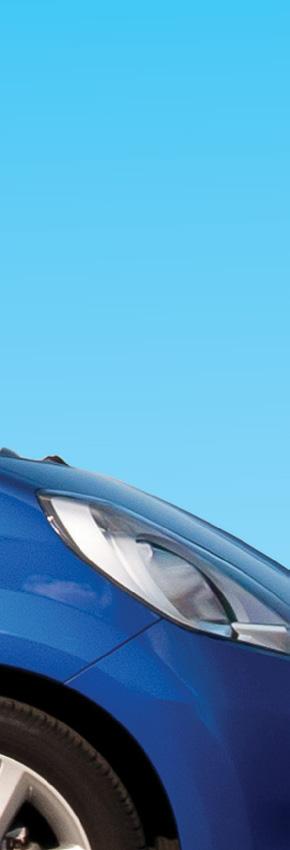
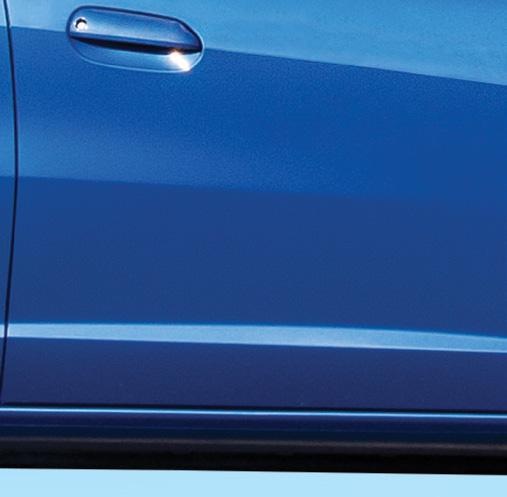
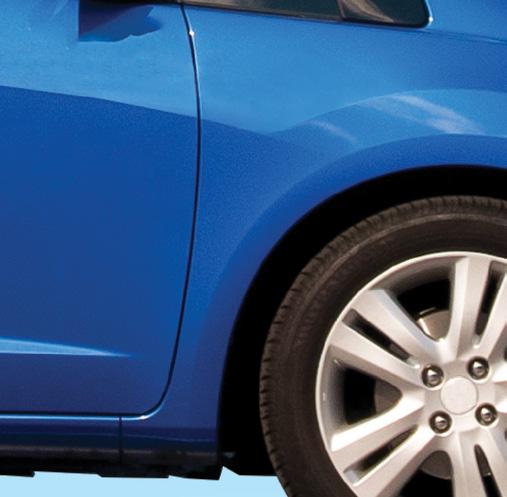
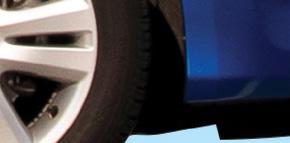

DON’T SWEAT THE ‘C’ WORD COMPLIANCE SHOULDN’T BE A DIRTY WORD. PROTECTA MAKES IT EASY. With the recent changes to the Credit Contracts and Consumer Finance Act (CCCFA), you can be assured that Protecta have got you and your customers insurance compliance needs covered every step of the way. Talk to us to find out more today! contact@protecta.co.nz | 0800 776 832 www.protecta.co.nz
the type of economical vehicle the government should be encouraging into the fleet.
He predominantly purchases vehicles from Australia, but also imports from Japan. He has yet to experience issues with Rightcar for Japanese vehicles, “but as soon as you step into other markets it’s like every second vehicle is problematic”.

As a result, Feringa has been checking the details of all his cars to ensure the charges or rebates are correct before trying to seal deals.
Another frustration is Waka Kotahi “taking around five or six days to respond to email enquiries”.
“I accept problems happen, but how we deal with them is what matters. There’s no acknowledgement from the NZTA that it’s got more than teething problems with the system.

“It would be good if the agency acknowledged there’s a problem and said if there’s something we as dealers believe is wrong, then here’s a dedicated number where someone can sort it out straight away rather than it taking weeks to fix.”
Other dealers who have raised concerns with Autofile include Marc Campbell, director of Milan Inspire Cars, which is based in Hamilton.
He had to delay selling a BMW and Mercedes-Benz from Japan while sourcing statements of
compliance from Germany to provide more accurate CO2 ratings than Rightcar’s.
“It was a shock to see one of them default to the maximum fee of $2,875 because the online dealer resource section had no emissions data for it,” says Campbell.
“The system is incredibly flawed. It’s the importer’s responsibility to get correct data to the NZTA, not the other way around. While this allows the agency to update its system so cars can be registered with the correct fees or rebates, it gets that information at my expense.
“I’m now turned off from importing cars because of the stress of having to pay more money for each one you
bring in. Dealers like me are going to say it’s all too hard because we’ll struggle to make money.”
Rod Hicks, who owns Wanaka Auto Sales, also ran into difficulties when the feebate scheme was launched.
He sold a 2020 Toyota C-HR hybrid, which he believed would attract a rebate of about $1,400. But he says Rightcar stated there would be a $1,897 fee and it took nearly two weeks before the problem was fixed on the website.
Hicks had another five more late-model hybrids, due to arrive around May, which showed up with “no information” on Rightcar.
They included a 2019 Nissan
Note e-Power X-Four – a four-wheeldrive variant with the small electric motor added onto the rear axle.
Then there were three Nissan Kicks e-Power Xs, model years 2020, 2021 and 2022, and all with the same specification and classification number.
“These are small SUVs powered by the system as used in the Note e-Power and meet the latest emissions standard,” he explains.
There was also a 2020 Subaru XV Hybrid, with the same specification and classification number as one he had already submitted.
“These joined the previous nine we had with either no data or incorrect data for.”
As for the bigger picture, Hicks says: “Dealers have woken up to the fact we now have to check every car on Rightcar and if there’s a problem, we need to get onto it.”
He adds Waka Kotahi should have a response time of 24 hours for queries about potentially inaccurate data, “rather than holding dealers at arm’s length for days on end”.
“I’ve adopted a process when I get a deregistered car with an export certificate. I keep those certificates until the vehicle has been complied and ratings in the government’s system are about what I think they should be.
“I will be checking the ratings all the time now.”
TOYOFUJI SHIPPING SCHEDULE
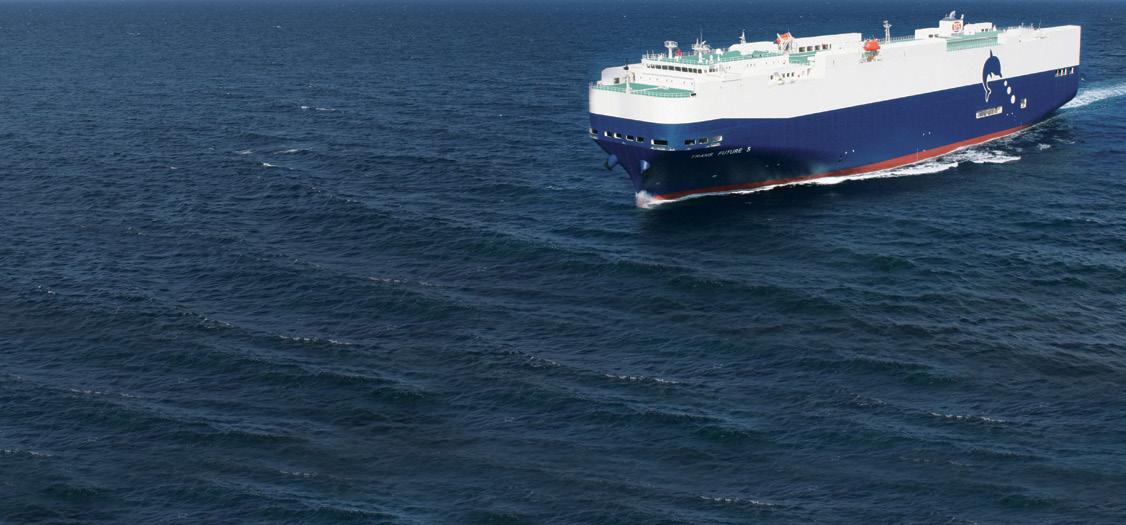
8 www.autofile.co.nz Contact: Adam Stone adam.stone@toyofujinz.co.nz www.toyofujinz.co.nz FROM JAPAN TO NEW ZEALAND ON TIME, EVERY TIME T/S = Tranship to next available TFS vessel Toyofuji vessels Voyage JAPAN NEW ZEALAND Moji Osaka Nagoya Yokohama Auckland Lyttelton Wellington Nelson Dream Angel 31 26 Sep 28 Sep 29 Sep 1 Oct 14 Oct 18 Oct 20 Oct T/S Trans Future 7 140 26 Sep 27 Sep 1 Oct 20 Oct 22 Oct 24 Oct 25 Oct New Century 1 175 11 Oct 12 Oct 15 Oct 5 Nov 8 Nov 10 Nov T/S Trans Future 5 144 24 Oct 25 Oct 29 Oct 17 Nov 19 Nov 21 Nov 22 Nov Trans Future 6 141 7 Nov 8 Nov 12 Nov 1 Dec 3 Dec 5 Dec 6 Dec
[continued from page 6]
news
Elliot Feringa, director of Select Autos Tauranga
“Dealers have woken up to the fact we now have to check every car on Rightcar”
– Rod Hicks
Clock ticking with standard
The new-vehicle sector is urging the government to finalise regulations sooner than later ahead of the clean car standard’s current proposed launch in January.
The Motor Industry Association (MIA) continues to impress on Michael Wood, the Minister for Transport, and his officials of the importance of getting this done so its members have enough time to roll out the systems that are needed.

Autofile has contacted Wood’s office on the way forward asking if the minister is considering delaying the scheme’s proposed start on January 1, if other launch dates are being explored, when any such announcement will be made and how much notice the industry will get on the way forward.
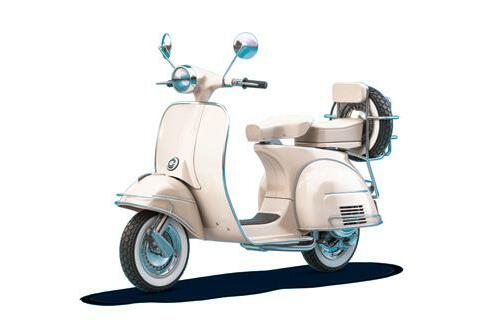
The reply, received on October 3 from a spokesperson for Wood, states: “The implementation
settings of the clean car standard are currently being finalised.
“Minister Wood expects to confirm these in the coming months. We expect to provide clarity to the industry as soon as possible.”
And a spokesperson for Waka Kotahi told Autofile on October 5: “We have been working closely with industry toward implementation to ensure industry have the information and tools they need to comply.”

David Crawford, chief executive officer of the MIA, says it’s the phrase “coming months” that’s of material concern to the newvehicle sector.
“We need clarification now and, if not now, no later than by the end of October if we are able to complete the development of our internal systems to enable the application of CO2 accounts required under the clean car standard.
Michael Wood, Minister for Transport, expects to confirm the clean car standard’s implementation settings “in the coming months”
“If we don’t have certainty by the end of October, then the government is asking us to carry on business with both hands tied up behind our backs.”
Crawford warns that finalising systems any later increases business risk because that would
hamper MIA members’ ability to properly comply with statutory and regulatory requirements.
“Officials and government are taking all the time they need to get their bits developed without realising that we also need to develop our own systems to comply with the regulations,” he adds.
“Until the regulations are gazetted, we don’t know what all the requirements are that we must comply with.”
As for the work and preparation of the clean car standard by the authorities, Crawford says: “The development of the standard’s systems and Waka Kotahi’s portal was working well until May this year.
“It then went silent for two months as the transport agency underwent a reorganisation and reallocation of staff working on it. That has led to flow-on effects with project delays. Two months
www.autofile.co.nz 9
[continued on page 10] news
were lost when they shouldn’t
“In our view, we also contend the Ministry of Transport was slow to begin work on the regulations.
“Oddly, both agencies blame each other for the delays and neither seem to want – at a leadership level – to accept accountability for delays.
“To be fair, Waka Kotahi has also had to contend with project scope. For example, importers of Class L vehicles – motorcycles and mopeds – are being required to set up CO2 accounts.

“This is because the act was written in a way that mistakenly led to them being included when the intention was that they would not be caught up in the clean car standard.”
BIDS TO DELAY START
The Imported Motor Vehicle Industry Association (VIA) and Motor Trade Association (MTA) are lobbying the government to delay the roll-out of the clean car standard.
“We are working closely with the Minister of Transport and his officials on the standard,” says Kit Wilkerson, VIA’s head of policy and strategy.
“We have strongly proposed to him that the start date for the standard is pushed back so Waka Kotahi can properly implement it.”
If there is a six-month delay to the launch of January 1, VIA contends then that should also apply to changes to weight bands in that they would also be reviewed in the June of each year.
“If that doesn’t happen, then used-vehicle importers will potentially lose the ability to collect six months of credits,” explains Wilkerson. “Some will be looking to hold these over
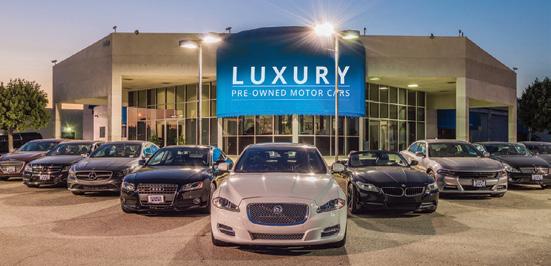
David Crawford, the MIA’s chief executive, says the Ministry of Transport and Waka Kotahi appear to be blaming “each other” for delays with the clean car standard
for three years because, by then, importing even Toyota Aquas will attract penalties.
“What we’re looking for is the whole clean car standard to be pushed back in its entirety for six months. This is because we are concerned about the impact it would otherwise have on the usedimports sector.
“As for the way forward and the standard, the government has been working on a decision for a while and we expect it to come out with something soon.”
Chief executive David Vinsen says: “VIA and the industry are working to reach a delay in the implementation of the clean car standard to enable the transport agency and industry to better
prepare for it. We are requesting this formally and legally.”
He describes the situation as “a live issue right now”, while answers to questions are yet to be announced because matters are so contentious.
The MTA is urging the government to postpone the launch of the clean car standard until at least April 1. It is concerned about the impact of the delay in issuing its regulations will have on the scheme’s introduction.
Tony Everett, sector manager – dealers, says: “The standard’s scheduled implementation on January 1 is looming large and still our members don’t have much of the detail they need to plan and prepare.
Targeting emissions
The clean car standard is being set up by the government to penalise importers of light vehicles with high carbon dioxide (CO2) emissions levels.
It is the second part of the clean car programme following the clean car discount in July 2021, which then became a full feebate scheme in April this year.
The standard, which will cause further disruption for the automotive market, is a supplyside mechanism that will rest on the shoulders of importers of new and used vehicles.
It has been created to progressively cut the CO2 emissions of light vehicles entering New Zealand from an average of 171gCO2/km today to 105g by 2025 – a reduction of almost 40 per cent.
The government believes importers will be able to meet this target by bringing in more electric vehicles, hybrids
and lower-emissions models.
Different goals will be set for suppliers to reflect their fleets under the standard. That said, they will have to ensure the average CO2 emissions are equal to, or less than, the target for its vehicles.
Those targets will also get progressively lower each year in order to help meet the government’s ambitions.
As the system works by averaging, models exceeding the CO2 target can be brought in if they are offset by enough zero and low-emissions vehicles.
Some vehicles will remain exempt from the standard, including those used for military operations, and agricultural vehicles and equipment.
Also exempt are scratch-built and modified vehicles certified by the Low Volume Vehicle Technical Association, vehicles with historic value and classic cars, and those built before January 1, 1919.
10 www.autofile.co.nz [continued from page 9] news Contact us now to find out more A better deal for the Motor Vehicle Trade Ph: 09 320 5646 www.autobridge.co.nz n Flexible credit facility available to fund vehicles in transit or on your yard n Access to stock when you want to buy, not only when you have the available cash n Free up your capital and grow your business n Only available to registered motor vehicle traders
have been.
“Used-import dealers have very little information on how the scheme will apply to them.
“They are now in the situation of ordering vehicle stock, which might not arrive until early December, and yet they still have no information on how the clean car standard will be administered, including what fees or credits will apply, how they will trade credits, or the importer registration requirements and process.”



Everett adds the scheme needs to be fit for purpose from the getgo and not bedevilled by “bedding in” problems.
“We appreciate Waka Kotahi is working very hard on this. But the scheme either needs to be comprehensive, tested and trusted or delayed until it is. We have urged the Minister of Transport to consider doing so until April 1 at the earliest.”
ENTRY-COMPLIANCE ISSUES

The more time that passes before the government issues and
implements settings for the clean car standard, which it says are “currently being finalised”, the more pressure falls on the industry.
Matters of entry compliance, for example, will be the responsibility of Waka Kotahi’s key service delivery partners (KSDPs).
For that to go smoothly, the KSDPs need to know what changes there will be to the vehicle inspection requirements manual (VIRM) and what the other regulatory matters are. Then there’s staff training and internal systems to sort out.
Jonathan Sergel, general manager of motoring services at the AA, says: “We have got none of the information to hand about anything that we need for the implementation of the clean car standard.
“We’re now getting very concerned that processes –for example, changes to the VIRM – will happen without any correspondence with the trade. We will be talking with Waka Kotahi
The last thing the AA wants, says Jonathan Sergel, is to be forced to hold used imports at compliance because of processing issues when dealers want to sell their cars
about these matters at our next monthly meeting.
“The situation we are in is very frustrating because there’s Christmas approaching and places will close or slow down from December 23, so that will be seven to 10 days lost.
“There doesn’t seem to be any learnings with all this from the clean car discount. There have been unintended consequences with that and unintended consequences will no doubt happen in this case as well.
“The last thing we want is to be
forced to hold cars at compliance when dealers want to sell them because of processing issues.”
Sergel notes the buying of used vehicles in Japan for importation into New Zealand isn’t at the high levels seen early this year in anticipation of the feebate scheme’s launch. In addition, there are now more logistical issues with getting cars here now than there were back then.
That said, there could be a push by importers to get stock through the system before the clean car standard starts and the impact this could cause also needs to be considered.

As for staff training to get the job done at entry-certification level, Sergel says this cannot happen until it is known what’s required.
“All of this takes time. We are concerned the industry will be hand-braked by these delays. As we get ever closer to the start date, we’re getting more concerned and asking more questions.”
www.autofile.co.nz 11 Why not ask what SBL can do for you? Every year we import thousands of vehicles into New Zealand. We manage every detail of the importing process from Japan to your door. For our approved customers SBL Finance can provide flexibility in funding a vehicle’s purchase. Ph. 03 377 6578 www.sbltd.co.nz Call us now and find out what everybody’s talking about. t news
Getting on-board electric switch
Amajor player in the used-imports industry has seen its proportion of electrified vehicle sales increase as the government’s clean car discount continues to influence consumer demand.
NZ Automotive Investments (NZAI) estimates its overall market share of sales has increased to 7.4 per cent during the first four months of the current financial year.
That’s up from 6.9 per cent compared to April 1 to July 31, 2021, and this has been achieved despite used cars registered for the first time dropping by 10.9 per cent over that period.
Haydn Marks, chief financial officer, says that as a result of the clean car discount’s launch and higher fuel costs, 40 per cent of all 2 Cheap Cars’ sales during this period were electric vehicles (EVs) and hybrid EVs (HEVs) – up from 21 per cent on 2021/22’s first four months.
As for performance, unaudited figures show revenue and income climbing by 10 per cent to some $27.7 million, “largely on the back of inflationary price increases on vehicles”.
Marks adds: “The contribution margin is down $500,000 due to the impact of changes to the Credit Contracts and Consumer Finance Act [CCCFA] and slightly lower vehicle-sale volumes.”
Some of NZAI’s priorities have been outlined. Gordon Shaw, interim chief executive officer, says its success relies on four key factors. These include flexibility to quickly react to changes in the industry and strict discipline when it comes to containing costs.
Others are ensuring any investment is subject to robust scrutiny and generates appropriate returns. Another is improving finance and insurance (F&I) penetration rates.
“We are examining and recalibrating the core business, which will improve financial performance and rebuild shareholder value,” explains Shaw.
NZ Automotive Investments’ performance
APRIL 1-JULY
2022 APRIL 1-JULY 31, 2021
Vehicle sales 3,028 3,164
Revenue & income $27.7m $25.1m
Cost of goods $22.7m $19.5m
Contribution margin $5.0m $5.6m
Operating costs $3.3m $2.9m
EBITDA $1.7m $2.7m
Underlying EBITDA* $2.0m $2.7m
NPAT $0.7m $1.4m
Underlying NPAT* $0.8m $1.4m
to navigate omicron in April.
“Despite this and other distractions, the automotive retail side has had a reasonable performance in the first four months of the financial year selling on average 779 vehicles per month from May onwards.”
Unaudited revenue from sales between April 1 and July 31 was $24.9m, up by 13 per cent on last year despite 3,028 units registered dropping by 4.3 per cent from 3,164.
“We have already identified measures we believe will lead to improved cost-efficiencies.”
These include:
Reconfiguring workflow at the vehicle-processing hub in Onehunga, south Auckland.
Further reducing outsourcing and expanding car-preparation activities at the hub.
Strengthening key supplier partnerships and expanding networks.
The company recognises market conditions and access to credit has tightened due – in part –to December’s amendments to the CCCFA. “Strengthening partnerships with our F&I providers and ensuring our branch network is sufficiently trained to maximise sales in this area is a critical first step,” says Shaw.
Also, NZAI’s management and organisational structure is being reviewed to ensure it is appropriate for the business’ size and scale, that
it’s cost-effective and it enables the company to operate efficiently.
Shaw adds: “One of our key strengths is our Japan-based procurement team, enabling us to hand-pick the best cars for the New Zealand market. We’re committed to repositioning for sustainable growth and turning the profitability tide in the shortest timeframe possible.”
NZAI says the first four months of the current financial year have been challenging “with inflationary pressure, economic uncertainty and rising interest rates contributing to a tightening of household budgets”.
“In addition, a considerable amount of time has been spent managing changes at board and senior leadership levels,” states a trading update issued ahead of the company’s annual meeting in September.
“It was a slower start to the financial year in terms of vehicle sales with the business continuing
This reflects price increases on vehicles sold being passed on to cover the rising cost of cars bought in Japan. “Gross margins over the period were tight but improved from June onwards once pricing adjustments were made.”
Vehicle finance income “had a slow start” – down by nearly 15.7 per cent compared to April 1 to July 31, 2021 – while the number of cars sold with finance dropped by 21 per cent.
NZAI’s investment in marketing, fewer sales and reduced F&I performance were factors in net profit after tax (NPAT) dropping to $828,000 compared to $1.36m in the same period last year.
Operating cashflow improved to $3.9m, up from $2.3m, which has been attributed to a 22 per cent reduction in inventory levels since the end of March.
The company says it’s in a sound financial position and – as of July 31 – was compliant with its banking covenants and cash of $6.4m, net debt of $4.9m and total equity of $15.5m.
Lending has been paused on the finance company’s loan book, which is being reviewed, with its value dropping by $500,000 to $6.3m by the end of July.
Statutory NPAT, which included a one-off gain on rearranging leases associated with moving 2 Cheap Cars’ vehicle-processing hub from Mount Wellington to Onehunga, was $2.6m, down by $600,000 on 2021/22.
engine room
Excluding the gain, underlying NPAT was $1.7m, down 55.7 per cent from $3.8m.
news 12 www.autofile.co.nz
31,
*Excl restructuring costs due to board changes and non-recurring consulting costs. Underlying EBITDA and underlying NPAT are non-IFRS measures. Numbers unaudited. Source: NZAI NZ AUTOMOTIVE INVESTMENTS | FY22 ASM Presentation 3 Welcome to The Hub 102 Mays Road Onehunga The
of NZ Automotive Investments NZ AUTOMOTIVE INVESTMENTS | 2022 ASM Presentation 2 Cheap Cars’ processing hub in Auckland

www.autofile.co.nz 13
Business as usual on stink bugs
Biosecurity New Zealand officers have been back on the ground in Japan conducting in-person checks of border-inspection organisations (BIOs) for the first time since the start of the Covid-19 pandemic.
Officials were visiting approved facilities last month after having performed the auditing process virtually from this country over the past two years.
It’s the main change by government officials for the current brown marmorated stink bug (BMSB) season, which began on September 1 and runs until April 30.


Biosecurity NZ recalled staff from Japan in March 2020 in the early stages of the global pandemic, which meant the verification of used-imported vehicles had to be conducted onshore here.

A year later, it announced its officers would be remaining in New Zealand permanently and transitional facilities were set up to cut delays in discharging vehicles at ports.
Eight transitional facilities have now been established in Auckland, Wellington, Nelson and Christchurch and, when necessary, vehicles are taken for treatment and reinspection at these facilities rather than the whole procedure being done dockside.
The import health standard (IHS) for vehicles, machinery and parts that was in force during the last BMSB season has not been altered for 2022/23 and 38 countries remain on the high-risk list.
In August last year, the Ministry of Primary Industries (MPI) said it would continue to monitor stink-bug situations in the UK and Chile to see whether those countries should also be subject to schedule-three requirements.
A Biosecurity NZ spokesperson says no updates to procedures for tackling BMSBs was made this year following a review of the previous season and overseas developments this year.
“We decided the risk levels haven’t changed sufficiently to justify changes to the existing IHS at this stage.
“There have been no significant changes to processes, other than the resumption of biosecurity personnel undertaking audits in person of Japan-based inspection and cleaning facilities. This auditing was managed virtually during the pandemic.
“There have, however, been some tweaks to the IHS for sea containers. These include introducing a permanent requirement for containers and goods from Italy to undergo offshore treatment. This requirement was initially introduced as a temporary measure in 2018.”
The spokesperson notes the first car carrier of the current season with BMSB-risk cargo was met by quarantine staff when it arrived in Auckland on September 19. No live bugs were detected.
“Onshore clearance is now business as usual for our border biosecurity teams. A consistent approach to inspections has led to faster clearance times and we plan to continue with this approach for the 2022/23 season.”
Blain Paterson, general manager of Toyofuji, says everyone appeared to get through the last BMSB season “without too many problems” and adds the MPI has set a standard that’s satisfactory for all parties.
He notes the approach adopted by Biosecurity NZ last season for clearing vessels from the ports was an improvement on the previous method when inspectors were first recalled from Japan.
“[The new system] was better than what we had previously because sometimes they were inspecting 100 per cent of vehicles for some BIOs,” says Paterson. “With all their studies, they were able to refine the process and now the MPI checks fewer vehicles per vessel.
“Shipping companies would prefer to still have the MPI in Japan, but we have to work with the system we have.”
While onshore processes for handling imported vehicles are now well-established, there are industry concerns the return of passenger shipping following the reopening of our borders to tourists will put extra pressure on MPI staff and resources.
For BIOs based in Japan, it’s business as usual. Jacob Bates,
general manager of Automotive Technologies Ltd (ATL), says no changes to the BMSB heattreatment regulations this year indicates current systems are managing the risk.
“ATL will continue to follow its existing MPI-approved processes and continue to communicate with the MPI about any potential changes or emerging risks,” he adds.
“The MPI’s expectation is that biosecurity risks are managed offshore, thereby reducing the risk of biosecurity incursions in New Zealand. This expectation is not going to change.”
Bates says there have been media reports in Japan of high populations of stink bugs this summer and more than 20 prefectures have issued warnings to fresh produce growers of potential crop damage.
“This is likely to lead to more interceptions of stink bugs as we move into the heat-treatment season and stink bugs start to search for areas to overwinter –inside used vehicles, for example,” he adds. “ATL keeps a constant eye on these developments and will manage the risks as they emerge.”
Keisuke Nagashima, director of Bordercheck, has also heard similar reports of BMSB numbers being higher than in recent seasons. He says the company will ensure it “maintains the quality of our work and that the right processes are in place”.
“The risk from stink bugs last season seemed lower than in the past, but that risk can differ from season to season. The numbers we encountered were nowhere near what we thought they would be and were well down from 2018-19 when we had the highest numbers.
“There’s talk this season could be larger than last year. It’s still quite warm in Japan and bugs are still feeding. It won’t be until the weather starts getting cooler that they start to find hiding places in vehicles and, as a result, we’ll start to see them pop up in heat chambers.”
14 www.autofile.co.nz news
“A consistent approach to inspections has led to faster clearance times and we plan to continue with this approach”
– Biosecurity NZ
‘Sensible approach’ to loans
The Financial Services Federation (FSF) hopes the latest round of changes to lending laws will enable consumers to get more access to loans.
It’s also keeping its fingers crossed that the latest amendments to the Credit Contracts and Consumer Finance Act (CCCFA) being proposed by the government will be the last for some time.
That said, the federation says the changes now on the table will come at a cost to finance companies and motor-vehicle traders when they unwind some processes put in place ahead of December 1’s shake-up of the CCCFA.
The government has already tweaked the legislation this year, and the extra changes aimed at remedying remaining unintended impacts are out for public consultation until 5pm on October 20.
These measures aim to narrow the expenses considered by finance companies, and relax assumptions lenders have needed to make about buy-now, pay-later schemes and credit cards.
Also part of an exposure draft released by the Ministry of Business, Innovation and Employment (MBIE) on September 22 is helping to make debt refinancing or consolidation more accessible if appropriate for borrowers.
The latest measures are described by Lyn McMorran, the FSF’s executive director, as a “big improvement” on the “minor” tweaks that came into force in July.
“This exposure draft looks to have a more sensible approach to how discretionary expenses are taken into account by lenders,” she told Autofile.
The FSF had yet to get feedback from its members by the end of last month as to how to respond to the consultation document, “but on first take it looks much better than the first round of changes”.
McMorran adds: “The last time we responded to government ‘tweaks’, our submission ran to 30 pages so this one will be another
big one to ensure the interpretation of the CCCFA is correct.
“It would be nice to think that once these changes are implemented, they will free up access to credit and put this legislation to bed for a while so everyone can get on with doing business.”
The latest proposals will remove the need for detailed conversations with consumers around discretionary expenses and will allow them to take control over their expenditure, which is what the FSF was hoping for.
“I think the new rules will allow lenders to consider a consumer’s fixed expenses and then whatever is discretionary is treated exactly as that,” says McMorran.
“Even if consumers continue with discretionary items, they still have an obligation to meet their loan commitments, but these changes will give the power back to them again.
“It might make processing times shorter because lenders won’t have to go through every single expense line and ask whether those outgoings will continue once the loan is drawn down.”
David Clark, Minister of Commerce and Consumer Affairs, announced the first round of changes to the laws in March following a drastic decline in the percentage of loans being approved since last December’s CCCFA amendments.
He revealed more changes in August after a review of the implementation of the legislation by the Council of Financial Regulators and MBIE.
Have your say
Public consultation on extra changes to the CCCFA’s regulations and responsible lending code close on October 20.
This follows a government announcement by David Clark, Minister of Commerce and Consumer Affairs, in August.
“We encourage you to provide feedback on the exposure drafts to ensure the changes work in practice and do not result in any unintended consequences,” says a spokesman for MBIE. “Your feedback will be used to improve the design of the regulations and code. Following consultation, the changes are expected to be in force in March 2023.”
To make a submission, visit www.mbie.govt.nz/have-your-say/ and scroll down for the CCCFA link.
While those measures are now out for consultation, MBIE notes the changes to regulations and the responsible lending code aren’t expected to come into force until March 2023.
McMorran says the compliance costs borne by finance companies to get ready for the regime that came in on December 1 were massive, “in the millions for some larger lenders and proportionately large for lenders of all sizes”.
They included changes to documents, significant project costs and those associated with systems changes, staff, and car dealer and agent training.
There will be costs, although probably not as significant, to unwind processes particularly when it comes to staff training and systems changes.
McMorran laments that FSF members will have spent 15 months operating within a “prescriptive, silly regime” that it warned the government wasn’t going to work. She adds changes and consultations since December could also have been avoided if the industry had been listened to.
“This should never have happened if there had been some sort of process in government to check regulation, particularly when industry was so opposed and put up reasoned arguments against it.
“Those reasons weren’t just for the sake of self-interest, but also because of the clear impact it would have on consumers. However, we weren’t listened to.
“Another aspect the government should be ashamed of is the very short timeframe to implement such huge change – from the final responsible lending code landing in February 2021, which finalised what exactly lenders were required to comply with, through to implementation by December 1.”
That was pushed out from the original October 1 date only because of the Covid-19 lockdown late last year.
McMorran adds: “This put huge stress on our members to get there by the due date despite directly explaining to the minister the logistics of running such a huge project and pleading for a longer implementation timeframe.
“We’re now pleased to be getting to a sensible place next year, but it’s frustrating having had so many months of suffering for a regime that was badly put together in the first place.”
www.autofile.co.nz 15
news
The FSF hopes the latest changes to the CCCFA will make loan-processing times shorter
Diamond delight for dealers
Nine dealerships clinched top honours as Mitsubishi Motors New Zealand (MMNZ) celebrated the best performers across its 59-site network during an “excellent” year for the marque.

The main winners at the annual Diamond Dealer Awards included Ingham Mitsubishi Te Awamutu, Piako Mitsubishi Te Aroha, Bay City Mitsubishi in Tauranga and Christchurch Mitsubishi.
Others were Piako Mitsubishi Morrinsville, WR Phillips Mitsubishi in New Plymouth, Brendan Foot Mitsubishi in Lower Hutt, Wairarapa Mitsubishi and Baigent Motors in Matamata.
Piako Mitsubishi has won more awards than any other dealership in the network and this year’s was its 13th trophy.
Darrell and Catherine Russell, who run the business, also took home the supreme award, a new honour introduced for the highest overall points scorer in the Diamond Dealer competition.
Daniel Cook, MMNZ’s chief operating officer, says the black-tie function in Taupo was a chance to recognise the marque’s 23,665 sales in its 2022 financial year, and celebrate a period that saw “goals accomplished, records smashed and growth sustained”.
“We are proud of all our dealers

and we rightly celebrate their achievements through our awards night. This isn’t just a chance for a pat on the back, it’s an opportunity to inspire our team to even greater heights.”
Other highlights among this year’s successes included Ingham Mitsubishi Te Awamutu being firsttime winners after increasing its sales by 108 per cent.
Bay City Mitsubishi clinched its ninth win in a row and 12th overall, and Baigent Motors won its seventh consecutive award. WR Phillips Mitsubishi and Brendan Foot Mitsubishi also recorded back-to-back successes.
Other awards on the night went
to Andrew Simms Mitsubishi –Newmarket, Brendan Foot Mitsubishi and Piako Mitsubishi Morrinsville for top new-vehicle sales.
Prizes for best market share were taken out by West City Mitsubishi, Piako Mitsubishi Rotorua and Archibald Motors Kaitaia.
Simon Lucas Mitsubishi prevailed in the service category and Baigent Motors was honoured for parts excellence.
Gongs for excellence in customer service were given to Stephen Duff Mitsubishi, Piako Mitsubishi Rotorua, Saunders Mitsubishi and Baigent Motors. The managing director’s award went to Southern Lakes Mitsubishi.
Sales model changes

Mercedes-Benz has launched an agency model in New Zealand, which sees the end of the negotiation stage for consumers and means franchises receive a set fee for each vehicle sold.
The company has dropped its dealership model in favour of the fixed-price system whereby the distributor sets the retail price of cars and retains ownership of stock.
Franchises’ contracts with Mercedes-Benz NZ have changed as a result and there are 22 “retailers” acting as agents for the marque.
The German carmaker revealed in August 2020 that the shift was coming to this country as it sought to digitalise more of its sales and after-sales experience.
Its agency model has already been introduced in Austria, Sweden and South Africa. It was also launched in Australia in January, but has attracted controversy there
with 38 dealers taking federal court action against Mercedes-Benz seeking compensation of about NZ$700 million.
The company’s New Zealand website outlines the main changes to its business operations under what it calls an “enhanced ownership experience”.

It says: “We’ve introduced pricing certainty to give you the assurance that once you have found the Mercedes-Benz of your dreams, no matter where you buy it, there will be no better offer in the country at that moment in time.
“All of our agents have access to the same stock, so you will now be able to choose [what’s] right for you from our entire stock pool regardless of where you choose to purchase the vehicle.”
Mercedes-Benz NZ joins Honda and Toyota as marques operating under an agency model in this country. It has also announced it aims to open an online store this year.
16 www.autofile.co.nz We are looking for NZ new Fords and Mazdas. Ideally 2012 or newer with less than 150,000km If you have something you'd like priced, contact Jason: 0274 133 222 | jason.robb@southaucklandmotors.co.nz
news
It was smiles all round for the winners at Mitsubishi’s annual awards
Pricing tool boosts your profit
Back in the July 2022 issue of Autofile, I wrote about the launch of our new range of pre-owned vehicle tools.
This plug-in to our ALICE platform supports dealers in the sourcing and pricing of vehicles by consolidating, in one dashboard, the data on all cars listed online nationally at that specific moment.
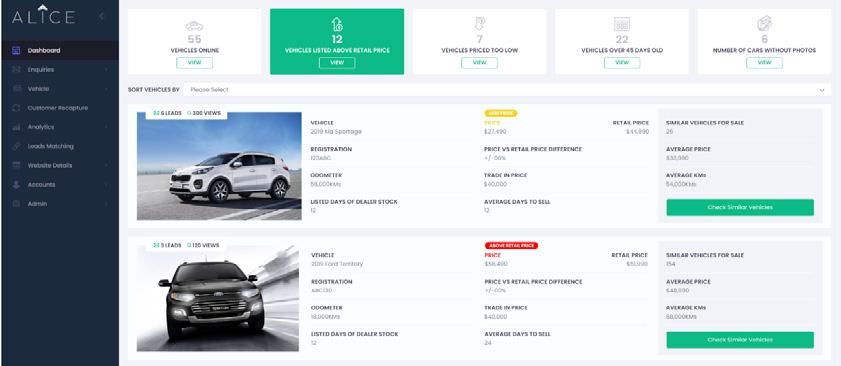
At the time of writing that article, although optimistic, I was unsure how the market would respond to this technology given it was brand new.
Now – more than three months on – I can confirm the response from dealers has been fantastic with many thanking us for bringing this game-changing technology to New Zealand.
In seeing the tools first-hand, many have enquired about the possibility of further enhancing them. They have queried whether the technology can be personalised to their individual dealership, matching their data against the broader market with the aim of improving their inventory pricing processes.


Well, at AdTorque Edge, when the automotive industry speaks, we listen. And so, I can proudly announce that this month sees the addition of a dealership-specific


pricing screen to our existing pre-owned vehicle plug-in.
This newly built technology enables users to see, at a glance, a snapshot of how a dealership’s own listings are performing against the current online market.
Our ALICE platform matches market data against a dealer’s inventory listings and then clearly reports how many:
Vehicles they have listed above retail price.
Vehicles that are priced too low.
Vehicles they’ve had listed for more than 45 days.
Of the same cars are currently
listed nationally.
Days, on average, it’s taking the market to sell a specific vehicle type.
This information allows the dealer to quickly see where their vehicles are ranked against the online market.
They can then make necessary adjustments to their listings to ensure they remain competitive.
Such never-before-seen intel allows for educated decisionmaking, and more informed strategy development, with the ultimate goal of maximising profit.
I cannot overstate just how
effective the pre-owned vehicle sourcing, pricing and customer recapture tools have already proven to be in driving efficiency for used-car departments around the country and overseas.
While they aren’t here to replace the wealth of knowledge held by the industry, their aim is to assist sales managers, and buyers, to more effectively, buy and sell.

The pricing and sourcing of vehicles with these tools heralds a new era in New Zealand as we catch up with the rest of the world.
And the addition of this new dashboard empowers dealers with even more data to put behind stock management, saving them time and enabling them to make better, more informed decisions.
www.autofile.co.nz 17
Call (09) 887 1822 or email info@adtorqueedge.com | adtorqueedge.co.nz ADTORQUE EDGE WHO THE F@*K IS ALICE? CONTACT US TO FIND OUT! ADTORQUE EDGE
TODD FULLER General manager, New Zealand AdTorque Edge Zealand
Industry movers
FRANK WILLETT and ROBERT YOUNG are now on the board of the Imported Motor Vehicle Industry Association (VIA).
Willett is chief executive officer of Autohub NZ. He took up that position in January 2018 having been acting CEO since February 2017. Young is the manager director of Nichibo Japan Trading.
VIA chairman Chris Stephenson says: “We are lucky to have two people with such an expansive knowledge of our industry join our board. I would like to thank them both for volunteering their time.”
The other board members are Matt Battle, of Moana Blue, and Ken Quigley, of Jacanna Customs & Freight.
ELAINE OWEN has joined Avanti Finance’s senior executive team as head of product and markets.

The role involves supporting company growth and developing new products. She has experience in lending and across various market segments, such as retail, commercial and investment banking.
Owen was previously chief product officer at the Medical Assurance Society. Before that, she held a senior role at ANZ.

SEAN STEVENS has been appointed to the newly created position of membership services manager for the Motor Trade Association (MTA).
He is responsible for the delivery of services and benefits to members. The role encompasses mediation, human resource services, membership support and IT, as well as the gift and voucher, and regional co-ordination, teams.
Stevens was most recently chief executive of Vehicle Inspection NZ. Prior to that, he had several after-sales roles with Ateco Automotive.


AARON WALES has been appointed automobile sales manager at Suzuki NZ following Sheldon Humphries’ departure.

Wales has been with the company since 2016. He started in the motor vehicle and motorcycle technical department before progressing to a motorbike sales role.
Prior to this, Wales, pictured, worked at a Suzuki dealership. He has more than 15 years’ experience with the brand.
MIKE WALSH has been appointed chairman of DEKRA NZ, the parent company of VTNZ.
Walsh, pictured, led VTNZ for almost 14 years from 2004-18 before becoming executive vice-president for southern Africa and Oceania with DEKRA SE.

He has been a director on DEKRA NZ’s board since 2018 and replaces outgoing chairman Stan Zurkiewicz, who is stepping down to focus on his role as global chief executive officer of DEKRA SE.

DEBBIE PATTULLO has left Toyota NZ after a 30year career with the company.
The general manager of people and sustainability worked in many departments, including marketing, Lexus and business support.
Marque praised for green head office
BMW Group NZ has moved into new offices in Auckland after spending 32 years at premises in Mount Wellington.
The company says the shift aligns with its strategy to focus on sustainability and reduce its environmental impact, and comes as its portfolio of electrified vehicles expands.
The new premises are at The Mercury in Newmarket, a building that exceeds five-star certification by the NZ Green Building Council by harnessing natural light and air, and making use of recycled materials during its construction.
Its features include a large atrium with openings to deliver natural ventilation to reduce reliance on air conditioning and woven vinyl flooring with a high level of recycled materials. The site also has electric-vehicle charging facilities for use by staff and visitors.
Adam Shaver, managing director of BMW Group NZ, says the premises will help the company provide support to its dealer network.
He adds: “Our new office space is representative of our commitment to the New Zealand market and our aim to embrace sustainability across all areas of our business, while offering our staff a spacious environment in a fantastic location.”
Phil Goff, Mayor of Auckland, helped officially open the
premises on August 26 and was joined by BMW Group executives.
These included Jean-Philippe Parain, senior vice-president for Asia-Pacific, Eastern Europe and the Middle East, and Mike Wetherell, regional chief executive officer of BMW Group Financial Services for Asia-Pacific.
Also in attendance were Teresa Rice, BMW Group NZ Financial Services’ managing director, Wolfgang Buechel, CEO of BMW Group Australia, and May Wong, chief executive of BMW Group Financial Services Australia.
Goff says: “The office is an innovative space that includes sustainability measures in keeping with the company’s efforts to reduce its impact on the environment.
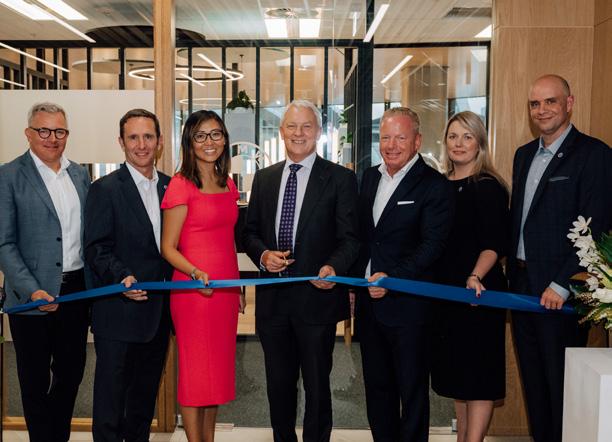
“As our city grows, we need to encourage such measures to continue working towards a more sustainable Auckland.”
News of the move comes in the wake of the company’s first half-year sales rising.
Registrations of fully electric BMWs saw quadruple percentage growth and sales of the Mini Electric Hatch notched up tripledigit percentage growth.
The group has bolstered its electrified range by launching fully electric models, such as the BMW iX3, iX and i4 Gran Coupe.
The i7 flagship sedan will debut this year and 2023 will see the arrival of the iX1, taking the group’s electrified portfolio to 10 models.
18 www.autofile.co.nz news
TO FEATURE IN INDUSTRY MOVERS EMAIL EDITOR@AUTOFILE.CO.NZ
Phil Goff, centre, cutting the ribbon. Also pictured, from left, are Wolfgang Buechel, Mike Wetherell, May Wong, Jean-Philippe Parain, Teresa Rice and Adam Shaver
Robert Young
Frank Willett
Industries separated by policy
Consumer law in New Zealand defines parallel imports as “genuine products, but the seller isn’t an authorised dealer of that brand”.
Until a few weeks ago, I understood this to include VIA members importing cars without the permission of the marque’s local authorised dealer.
Interestingly, I’ve found out the regulator doesn’t consider us parallel importers and, hence, goods we import aren’t parallel imports.
Instead, the regulator defines one as a new vehicle imported outside normal distribution channels. Under current regulations, this means only importers sponsored by original equipment manufacturers (OEMs) – local authorised distributors –can be parallel importers.
For some background, this country embraced parallel imports decades ago because there was insufficient competition in many industries, including automotive. The public was getting ripped off by high prices and lowspecification products, and the decision on parallel imports was seen as a pragmatic solution to boost competition.
Parallel imports were allowed to “make New Zealand goods markets more competitive and to ensure New Zealanders are paying internationally competitive prices for goods”, to cite a note in the Copyright Amendment Bill.

The government of the day understood it was self-regulating. If local authorised distributors provide the best prices and service, there’s no incentive or opportunity
for parallel importers to enter the market. This still holds true today.
Unfortunately, this is not what’s happening. While the Commerce Act specifically permits parallel importers, the Land Transport Act nullifies that by having rules allowing OEMs to prevent competition.
In addition, the regulator redefines parallel imports in a way that only applies to OEM-sponsored importers.
To be clear, according to the regulator, OEM-sponsored importers are “new car importers” if they import through their normal supply chains and “parallel importers” if they source vehicles outside of them.
I would be curious to see what sort of oversight the regulator provides for parallel imports. It appears their import processes mirror used imports except there’s no requirement vehicles be independently inspected, and all information supplied by the importer is assumed to be true and accurate. This makes sense if the regulator assumes the parallel importer is also the OEMsponsored importer.
I’m also curious how the regulator would reconcile this system with the stated intent of the Commerce Act in that it declares the local copyright holder, both the OEM-sponsored and parallel importer, and prevents anyone else from competing by parallel importing vehicles. This seems to block the Commerce Act’s intent.
I’m now trying to overcome my cognitive dissonance to figure out what it means for VIA’s members to not be parallel importers. I’m trying to rethink through industry dynamics, and how they relate to existing and proposed legislation and regulation.
The first obvious conclusion is the distinction between new and used-car importers is a real thing. This is a fundamental shift in my perspective.
I had always assumed the distinction was a convenient description based on areas of focus in the industry, but that it was flawed because the Commerce Act specifically allows goods to be imported without the permission of the local copyright holder and for those importers to compete on equal terms in a fair market.
I have always assumed we would eventually be able to overcome vestigial protectionist policies and be able to compete in the new-car space too.
I’ve been told repeatedly by a few colleagues this wasn’t the case and that used-car importers cannot compete in the new-car space, but I falsely assumed they were wrong and eventually we would rightly be able to compete as equals.
Now I understand that new and used-car importers are not a false dichotomy. They have clearly and purposely defined distinction. We aren’t a single competitive market. We are two markets selling two distinct products and subject to
two different sets of regulations.
I now understand what my colleagues have been trying to tell me. It is, by definition, impossible for a non-OEM-sponsored importer to bring in a new vehicle and compete in the new-car space.
I’m now torn on how to proceed. Should we fight this injustice or take advantage of it? If we are the suppliers of distinct goods, the onus to ensure policies effecting our goods are “fair” in relation to the new vehicles is gone or at least diminished. We can judge ourselves in isolation.
I am certain that if I was aware of this earlier, my advice to industry and government would be different. Take the clean car policies, for example, and the idea of shifting it to a per-vehicle basis and modelling that showed this would be equivalent over time came from me.
In hindsight, and with this new understanding in-hand, I wouldn’t have made that effort. I would have allowed the programme to influence manufacturers to work as designed and we would have demanded a separate system to influence used cars that wouldn’t disrupt our competitive supply dynamic.
Now I understand and hope everyone else does. We have two industries distinctly separated by government policy.
One has the goal of selling new vehicles that maximise international OEM profits and they are well-supported by government. The second industry, which the government just barely tolerates, is designed to provide quality used cars at prices Kiwis can afford.
www.autofile.co.nz 19 tech report
KIT WILKERSON Head of policy and strategy kit@via.org.nz
Advise • Advocate • Connect www.via.org.nz Imported Motor Vehicle Industry Association Advocate Advise Connect
The month that was... October
October 21, 1996
How bad will it be?
It was predicted that the next few years would be tough for the industry as dealers coped with falling used-vehicle values and the uncertainties of a nervous post-election market.
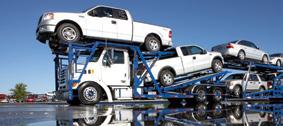
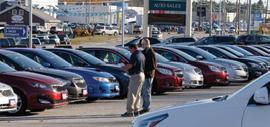
But the tough times weren’t expected to last long. Political stability and falling interest rates were forecast to boost pre-Christmas sales and set a positive tone for 1997.
The clear message from Wellington was, “don’t lose sleep over the outcome of Winston Peters’ power-broking, there’s only one way he’s going to go and that’s to the right”.
That would be good news for the retail car industry with a continuation of policies that ensured stability and good business prospects over the next two to three years.
While the media had a field day predicting a left-wing coalition, seasoned observers believed there was zero chance of Peters’ New Zealand First being sucked into teaming up with Labour and the Alliance. That was because National and NZ First had sufficient votes to go it alone.
October 28, 2005
LTNZ to review system

After losing a long legal battle, Land Transport New Zealand (LTNZ) had agreed to explore ways of streamlining the compliance process in cases when standard documentation was unavailable.
The government agency took Kiwi Auto Exports, owned by prominent industry figure Jerry Clayton, all the way to the high court in an attempt to keep a 1999 Ferrari 360 Modena, which was imported by Kiwi Auto in 2004, off the road.
That said, it was earlier in October 2005 the high court dismissed LTNZ’s review saying it was inconceivable the car would have been built to a lower standard than New Zealand regulations allowed.
Andy Knackstedt, LTNZ’s media manager, said the authority had agreed to set up a working party with the Independent Motor Vehicle Dealers’ Association and MTA to look at improving the system.
However, it was still too early to say whether LTNZ would fight similar cases in the future.
“We will have to look at each case on its own merits,” explained Knackstedt. “We are having a good look at the decision and have undertaken to work with the industry on a way forward. It’s important to recognise the fact that New Zealand has a liberal system in comparison to other countries in relation to the importation and regulation of used vehicles.”
October 1, 2004
Auto recruiting overseas
A dramatic shortage of skilled workers was forcing employers in the automotive sector to take on staff from overseas.
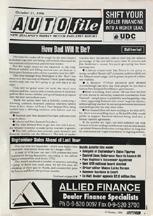


Mark Russell, chief executive officer of Papakura Toyota, had given up recruiting technical staff in New Zealand because the labour market was too tight.
“We continuously take on Kiwi apprentices,” he said. “But when we need skilled technicians to balance the team out, we look overseas.
“I know of one Toyota dealer who takes a recruiting trip to England once a year, looking for people interested in a lifestyle change. There have been some major shortages.”
The National Bank’s small business monitor suggested the lack of skilled staff was the biggest problem facing small and medium-sized enterprises – firms with 20 or less employees.
July’s quarterly survey of business opinion found that 20 per cent of all firms reported labour as the single factor most limiting their ability to increase production or activity – a 30-year high.
Members of the Motor Trade Association (MTA) had been expressing concerns about the shortage of skilled staff for months. An initiative addressing these was due to be unveiled at its mid-October conference.
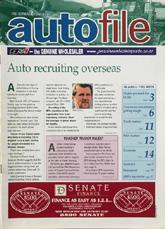
October 10, 2008
Vehicles getting safer
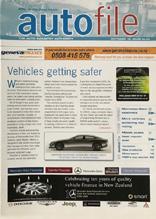
Without a doubt technology was getting better. Advances were more so in the car industry with marques making cars safer on what seemed like a weekly basis.
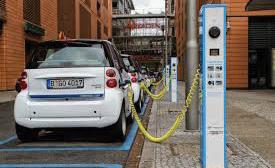
Some manufacturers had now introduced crashavoidance systems to help motorists avoid costly scrapes and, more importantly, death.
Ford had unveiled a new feature for an array of models from 2010 onwards. Called MyKey, it was designed to help parents encourage teenagers to drive more safely and fuel efficiently, and to increase safety-belt usage.
That kind of parental control was new in automotive, although it had already been used in the marine market for a number of years. Personal watercraft manufacturer Sea-Doo had been offering its “learning key” on vessels since 2000.
Ford’s initiative could limit teenage drivers to 130kph by using a computer chip in the key. Parents could also programme it to sound continuous alerts if the driver wasn’t wearing a seatbelt and sound a chime if the car exceeded 72, 88 or 105kph.
Don’t go searching for news. Let the news come to you.
20 www.autofile.co.nz news looking back
Subscribe now to for twice-weekly updates www.autofile.co.nz/subscribeINSIGHT
Time for full and frank feedback
How are you feeling about business and more specifically your relationship with franchise partners?
That’s possibly a controversial question, even though it’s everpresent in the daily life of being such a dealer.
Besides it’s not as if the market has been “situation normal” over recent times, notwithstanding we are also facing a lot more change in the months ahead.
A small relief valve comes in the form of the annual dealer attitude survey run by the MTA in which franchisees can express their views en-masse and under the cover of anonymity.

It might sound like a volatile and highly combative initiative, but it’s not in reality.
The association’s survey is not, and nor has it ever been, about finding winners. Its sole purpose is to provide a conduit for full and frank feedback from dealers to their distributor partners.
And the outcomes can help all parties, on both sides, identify any pinch-points in their relationships.
The MTA jealously controls the survey’s conclusions and no public promotion of its results is allowed. In short, it’s an initiative
by the industry, for the industry.
This survey idea isn’t unique to our country with similar ones being run in many other markets around the world.
In fact, the one we use is modelled off the National Automobile Dealers’ Association’s equivalent in the US.
TONY EVERETT Sector manager – dealers, Motor Trade
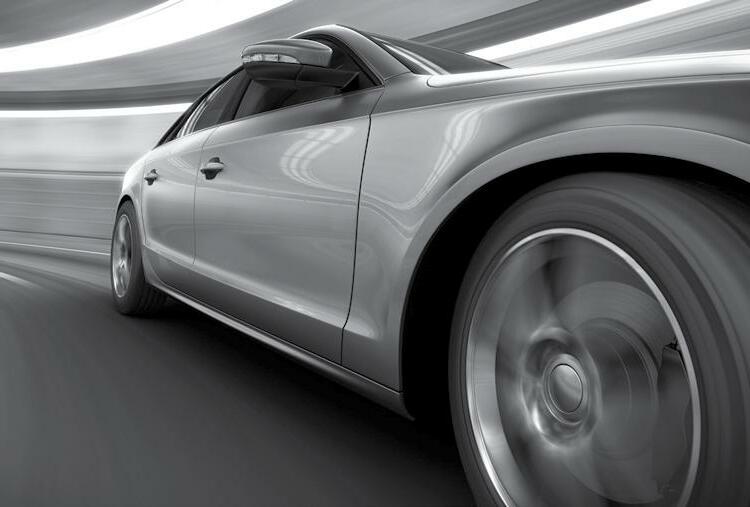


The New Zealand survey enjoys a very strong participation rate – about 50 per cent overall with some brands regularly drawing an
and has arguably built strong levels of trust among the franchise community on both sides.
What do the
respective distributors think? That is, perhaps, a tricky question given they are the subject of the collective criticisms and complaints, as well as the positives – and, yes, there are plenty of them as well.
You might be surprised to hear that some, although not all, distributors keenly await the initiative, and treat the results positively and seriously.
Many actively encourage their dealer networks to participate with regular follow-ups and
sort only has value if it reflects the widest possible “voice” of the respective network, with high participation rates bringing weight and validity.
This year’s survey forms were posted out – yes, mailed as in “snail mail” – to all “identified” dealers on September 17.
We say identified because it’s not that easy to track all franchise dealers and, more specifically, their postal addresses. There’s always a chance we may have missed out a few, so if you haven’t received a copy, or have mislaid it, don’t hesitate to contact me on 027-457-4340 or flick me an email at tony.everett@mta.org.nz. We are always happy to send you another copy, no questions asked.
If you’re new to the role, or haven’t seen the survey before, again get in touch with me because I’m happy to send you a copy of last year’s report.
encouragement. We’ll gladly take that as positive and a vote of support.
So, this is a reminder to light-vehicle franchise dealers to do their bit for themselves and their peers by participating.
Any type of initiative of this
Why post it in these onlinebased times? Well, because it works. As a tangible item, the survey form can sit comfortably on dealer principals’ desks as a reminder until addressed and it doesn’t fall out of sight under the weight of the endless daily stream of emails.
And just a reminder that the survey period closes on October 31. It will be great to hear from you.
Association HELPING DRIVE YOUR BUSINESS The MTA brand is consistently associated with expertise, reliability and trust. Talk with us today about the benefits of MTA membership. mta.org.nz | 0800 00 11 44
“It’s an initiative by the industry, for the industry”
The cover of last year’s MTA survey
Electric dreams do come true
Chinese electric-car specialist BYD has launched in this country with its Atto 3 hatchback.
The model, which is eligible for the full clean car rebate of $8,625, notched up 448 units in August – its first month of sales in New Zealand.
Two more fully electric models from BYD, which stands for “build your dreams”, are expected to join its New Zealand line-up next year to be followed by another battery EV (BEV) and a plug-in hybrid (PHEV) in 2024.
The Atto 3 is 4.4 metres long and has 440 litres of luggage space. Its single motor produces 150kW of power and 310Nm of torque to its front axle.
There are two battery capacities offered with the Atto 3. The 50kWh unit provides a 320km range while the 60kWh model is rated at 420km.
Standard features include a panoramic sunroof, a one-touch open-close tailgate and high-beam assist for the LED headlights.
Inside, there’s a 12.8-inch touchscreen, five-inch digital instrument panel, synthetic leather trim, a 360-degree view monitor, smart key and wireless phone-charger.
Active safety systems include lane-departure warning, stopand-go full-speed adaptive cruise control with automatic
emergency braking, front and rearcollision warning, and blind-spot monitoring.

The car’s warranty period covers six years or 150,000km, while it’s eight years or 160,000km for the battery.
The next models to arrive down under are expected to be the EA1 light hatchback, also known as the Dolphin, followed by the Seal.

Underpinned by the company’s e-platform 3.0 and powered by its Blade lithium-ion battery pack, which is renowned for its compactness, the Seal is the second fully electric sedan in BYD’s “ocean series”. It is expected to be known as Atto 4 in this part of the world.
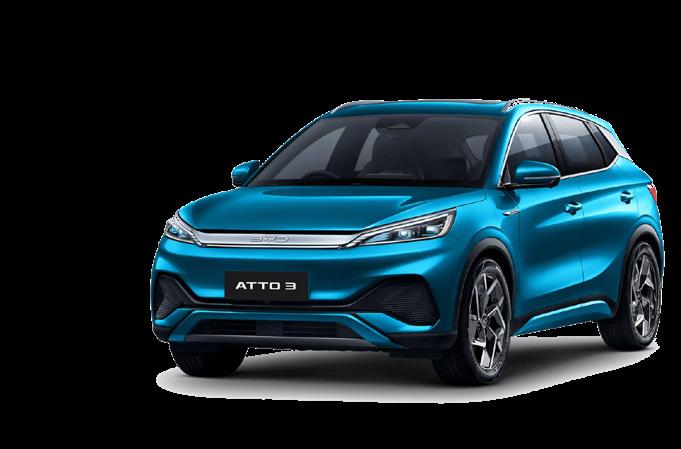
BYD, which is being represented here by Ateco Automotive NZ, has yet to reveal battery capacities to be offered, but says the Seal’s lineup will include 150kW and 230kW rear-wheel-drive variants.
There’s also a range-topping AWD version, which will have a
a 230kW motor at the rear. This variant has a claimed time of 3.8 seconds for the 0-100kph dash.
The 800-volt e-platform 3.0 has a direct cooling and heating system for the battery packs, which are said to increase thermal efficiency by up to 20 per cent.
BYD says the optimal range is 700km from a full change and up to 150km can be added after five minutes of DC fast-charging.
‘INNOVATION’ NAMEPLATE



Tata has unveiled its Avinya concept based on its Gen 3 architecture, which signals a new identity for the Mumbai-based company.
Intended as a premium offering, the parent company of Jaguar Land Rover (JLR) says the EV’s production version will be “fairly accessible to a majority of customers” when introduced in 2025.

Showcasing Tata’s Sanskrit design language, the nameplate stands for “innovation”.
Its cabin design is based on a catamaran and will offer “enormous roominess and comfort”, while “new-age technology, software and artificial intelligence” work together to create “wellness and tranquillity during transit”.
Specification details are scarce,

next-generation connectivity, advanced driver-assistance systems, and enhanced performance and efficiency with up to 500km range from a 30-minute charge.
Its body is similar to Audi’s Urbansphere in that it embraces people-mover proportions and coach-style doors.


The model’s short overhangs offer more interior space than is provided by conventional body styles, and it boasts swivelling front seats and camera-based rear-view mirrors – also like its German counterpart.
There are few screens inside the cabin with Tata saying it wants to focus on a human-centric design and to reduce distractions. It instead offers just a single screen set in the steering wheel.
Natural light is brought in from the “skydome” ceiling, while voiceactivated systems provide a “deeper interface” for all passengers.
Construction of the Avinya has sustainability at its heart, according to Tata, such as “next-gen materials” and a design that allows lightweight materials and an optimised structure to provide “appropriate stiffness” to help minimise mass.
It’s unknown if the car shares the same electric modular
22 www.autofile.co.nz
To advertise here, contact: advertising@autofile.co.nz or ph 021 455 775 VEHICLES WANTED DEALERS BUYING NOW Automotive excellence since 1993. Your o cial Audi, Porsche, Jaguar, Land Rover and Volvo dealer Wellington 66 Cambridge Terrace, Te Aro, Wellington | 04 887 1306
new cars
BYD’s Atto 3 and its Seal, above, which is expected to be known as the Atto 4 down under
Tata’s Avinya concept
architecture as earlier promoted by JLR. Last year, the latter said more than NZ$4.94 billion would be invested annually in developing electrification technologies and connected services.
RANGE TITLE CLAIMED
American start-up Lucid Motors is claiming the title of longest-ranged EV with its Air Dream Edition Range offering 837km on a single charge certified by the US Environmental Protection Agency (EPA).
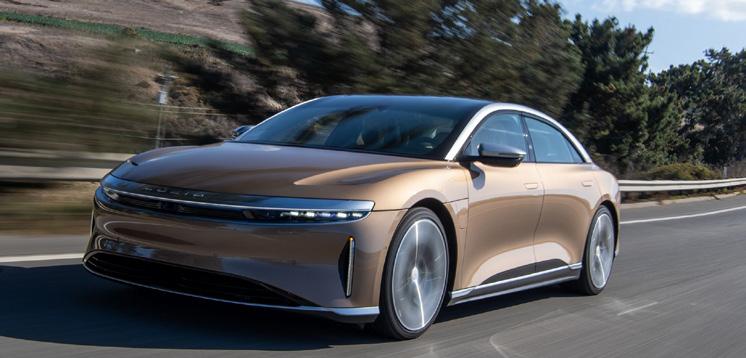
That eclipses the 652km offered by the 2022 Tesla Model S and the 602km range of the Model 3 Long Range AWD, although it should be noted that both of their claims are under the Worldwide Harmonised Light-Duty Vehicles Test Procedure (WLTP) standard rather than EPA rules.
For context, other big-battery EV options, such as the Polestar 2 Long Range Single Motor and Porsche Taycan GTS, can clock up 540km and 504km respectively on a single charge on the combined cycle.
The Air Dream Edition Range is a massive step up from what’s currently on the market even after accounting for potential differences between the WLTP and EPA protocols with the former tending to deliver higher numbers than the latter.
The Lucid’s big range advantage is largely down to pure physics rather than engineering trickery. The Air Dream Edition Range has a 118kWh lithium-ion battery pack in its chassis, which
gives it the ability to store energy levels other EVs can’t match.
The Taycan GTS, for example, uses a 93.4kWh battery, the Model 3 Performance has 82kwh at its disposal while the Polestar 2 previously mentioned has a 78kWh battery pack.
Aerodynamics play their part and the Air’s drag co-efficient of 0.21 is low for a production vehicle but it’s the quantity of the battery cells, which LG Chem supplies to Lucid, that gives it such a long range.
Air Dream Edition Range boasts a 0-96kph time of 2.5 seconds, peak power of 828kW and a top speed of 270kph.

When broken down to kilometre-per-kilowatt-hour figures, it extracts more distance from the same amount of energy than Tesla can achieve.
For the Model S, a single kilowatt hour from its 100kWh battery delivers 6.52km of range. The Air Dream Edition Range, meanwhile, travels 7.09km on the same test protocol.
Priced from around NZ$251,000 in the US, all 520 Air Dream Editions are sold out. Other variants – the Pure, Touring and Grand Touring –remain available.
Last year, a spokesman for Lucid was quoted as saying the company doesn’t yet have a timeline for right-hand-drive production.
BLAST FROM PAST
The new Moke Electric offers a top speed of 80kph, range of 120km and can be fully charged
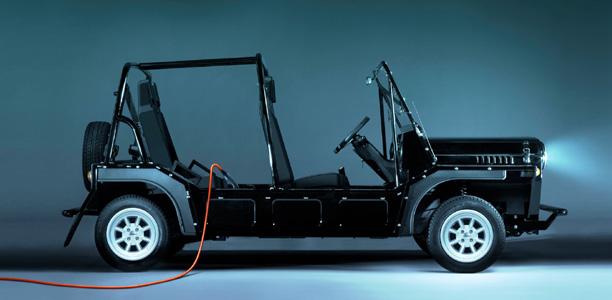
in about four hours from a household power outlet.
It retails from about NZ$59,430 and customers can further “personalise cars to their tastes and sensibilities” later this year.
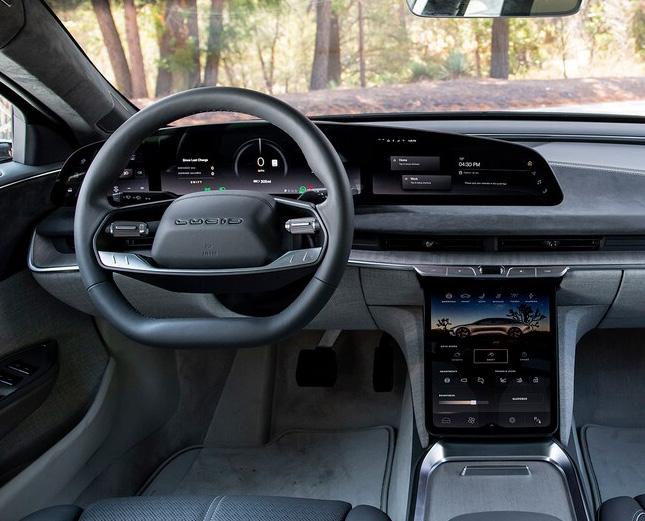
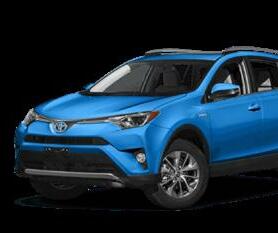
The 800kg model provides 33kW of power to its rear wheels, and it’s available in right and lefthand-drive configurations.
The London-based brand says its battery cells, motors and inverters are sourced from tierone European suppliers.
The new Moke is built in the UK under the leadership of former Rolls-Royce product lead Isobel Dando, and has been redesigned to improve acceleration and driveability.
Aluminium body panels reduce weight, while improved braking systems, occupant and pedestrian safety features help bring the model up to par with modern rivals. The new BEV is equipped with power steering, regenerative braking and a heated windscreen.
It’s 3,225mm long, 1,660mm wide and 1,546mm high, all of which makes it 14mm shorter, 212mm wider and 146mm taller than the British Motor Company’s original.
More than 26,000 original Mini Mokes were built across the Tasman between 1966 and 1981. They sold for the modern-day equivalent of up to around NZ$35,500.
VEHICLES WANTED
Looking to buy late model NZ N ew cars, SUVs and commercial vehicles
Paul Curin
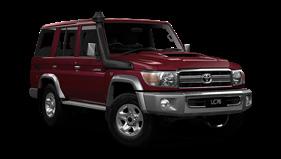
www.autofile.co.nz 23
new cars
Contact
P. 0274 333 303 | E. pcurin@milesgroup co.nz
The Air Dream Edition Range
The Moke Electric
‘Consistency is key’ to success
The role of Formula Ford in helping to develop their craft and skills is key for regular drivers and rising talent, according to Christchurch’s John Crawford.
Together, the South Island Formula Ford Club and the North Island Formula Ford Series feed the overall NZ Formula Ford Championship.


The south has been substantially stronger than the north, but the championship format featuring both has proved successful and continues to propel young Kiwis forward into their careers.
As the owner of the Ruapunabased Motorsport Solutions race operation, Crawford has been involved in the category for more than four decades.
He won the NZ Formula Ford title in 1984/85 driving a Reynard FF84 and his company particularly specialises in single-seaters. There is a long history of supporting, teaching, training and supplying many drivers who have come through the category.
In recent seasons, a large number of new Ray and Spectrum Formula Fords have been imported to be raced here along with second-hand, late-model Van Diemens.
Crawford says this is a heartening demonstration of investment going into the category.
Unlike the direction taken by the premier Castrol Toyota Racing Series, which is a onechassis category with all vehicles
owned by the Toyota Gazoo Racing operation based at Hampton Downs, all Formula Fords are privately owned either by the drivers or independent teams such as Crawford’s.
“Those moving into Formula Ford, particularly from kartsport, are initially faced with the question of what car do I compete in,” he says. “Effectively, there’s a choice of buying a cheaper, well-sorted older vehicle, a latemodel recently imported chassis or a new turnkey race car.”
Crawford points out that the benefits of buying those boasting a good older chassis, such as a Stealth, is that they have a proven
and successful record. The flipside is owners can face some major maintenance, “as you would with any old equipment.”
“The benefit of buying a new or late-model chassis, such as a British-built Ray, is that it’s a factory developed car, and easy to set up and work on.”
Crawford says late model or new race cars have a higher FIA-homologated safety rating and feature sideintrusion bars. A new chassis runs to around $55,000 plus engine.
“You are not going to have reliability issues and the maintenance is much lower,” he notes.
Motorsport Solutions handled the 2022 race campaigns of North Island champion Bree Morris, South Island champion Zac Christensen and overall New Zealand champion Alex Crosbie.
“Take, for example, Crosbie’s Ray GR21. Essentially, the team bought the car new, fitted a new engine and went testing, competed in 18 South Island and eight national Formula Ford races and the engine never came out of it.
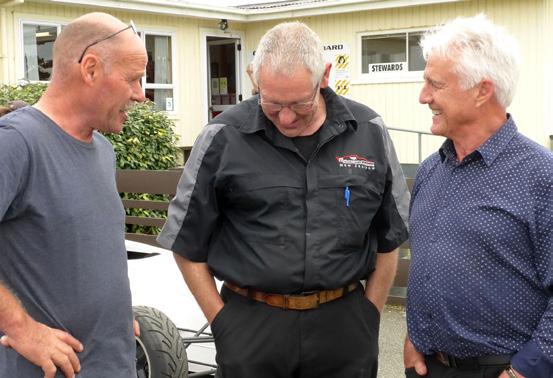
“Yes, the initial purchase costs of a new vehicle and engine are higher, but it’s like anything new in that you have the benefits of model technology, factory support, better reliability and lower maintenance.”
Crawford says consistency of rules and regulations is critical, with the northern and southern championships now running independently.
“It’s not just the consistency of car and competition regulations, but also the co-ordination of racing calendars and sponsorship. Maintaining the current rules and regulations is important for the future of Formula Ford.”
Crawford says there will always be tweaks to be made, but the category is in good health. It gives confidence for regular drivers and those coming up from kartsport to invest in the equipment required.
Formula Ford remains a category of learning and developing racecraft, “so nothing replaces testing and mileage in a Formula Ford”.
Understanding the dynamics of bigger vehicles with greater mass is vital for drivers coming up from karting, and Crawford says seat time in a race car is essential and invaluable.
“Learning new tracks and new conditions, it takes some time to feel comfortable and most of these kids out of kart sport don’t know how to drive a full-sized car.
“It takes time and attitude to get to know the vehicle, the engineering, the engineers and understanding how it all works.”
24 www.autofile.co.nz motorsport
“Those moving into Formula Ford are initially faced with the question of what car do I compete in”
– John Crawford
Conference time – John Crawford, centre, with Formula Ford technician Tom Penrose, left, and Steve Foster, owner of the Van Diemen RF88 that took Andy McElrea to southern and national Formula Ford titles in 2020-21
Alex Crosbie, number 41, and Bree Morris, car number 55, in Formula Ford action. Photos Euan Cameron
Flat out in electric form
Hayden Paddon’s extremely busy year in the world of motor racing continues.

He is fresh from winning the Ashley Forest Rallysprint in his all-electric Hyundai Kona and has a full World Rally Championship Rally of New Zealand behind him.
Paddon’s next venture is in Europe to compete in the Rally Terra Sarda from October 9-10, with the Italian event being the final round of the Tour European Rally (TER) series.
Paddon and Jared Hudson contested the previous round of the TER in Wales and won outright – the former’s first-ever tarmac rally victory. He now has a good chance of taking out the series in Sardinia.
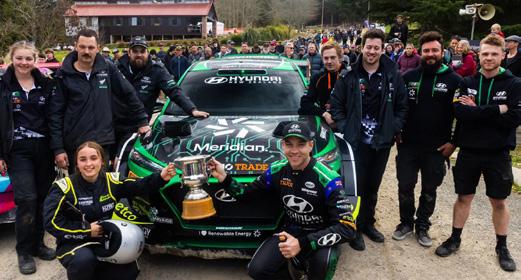
“This is a perfect conclusion to the TER,” says Paddon. “It’s a series we have really enjoyed being part of this year and hope to see it grow even more in the future.”
The i20 driver lies second in the provisional standings, only three points behind two-time Swiss
champion Ivan Ballinari going into the series finale in Sardinia.
As for the TER series, 515 drivers have registered for it between 2016 to 2021 and they have come from some 23 countries. Its two official motorsport teams are Hyundai and Toyota.
Back-tracking to midSeptember and the Ashley Forest Rallysprint, Paddon battled the event’s former winner, Rotorua’s Sloan Cox, who was second overall after the final run-off.
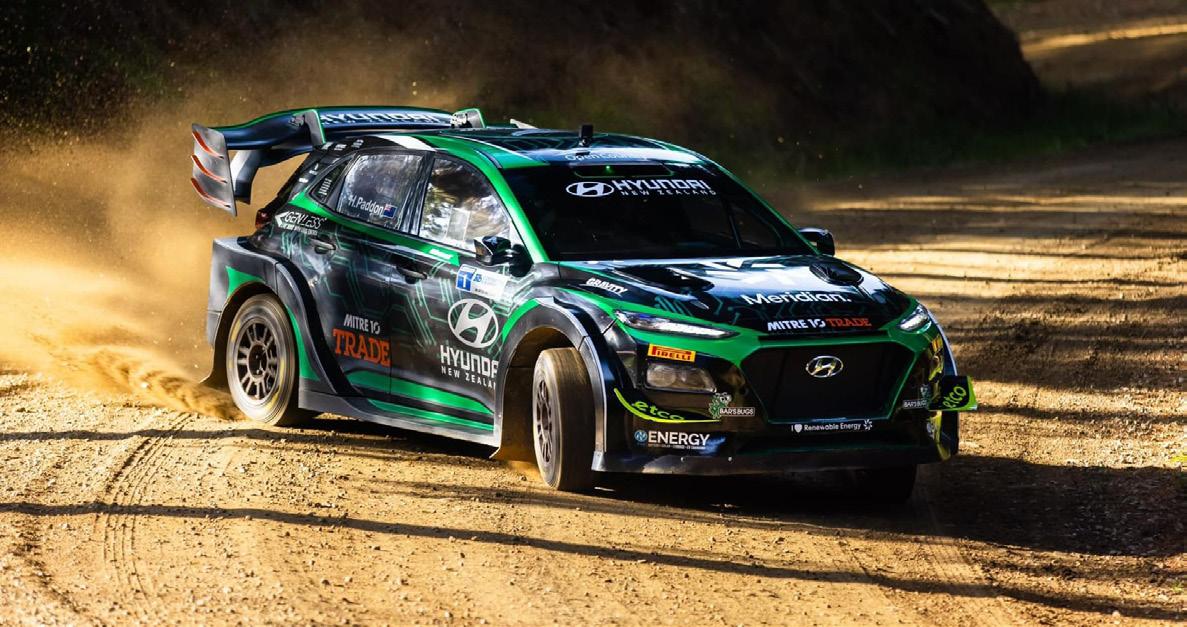
Road conditions weren’t conducive for Cromwell-based Paddon to better his record time of
52.77 seconds set in his Hyundai i20 AP4 rally car in 2019.
Running in the unlimited fourwheel-drive category, his winning time at the course near Rangiora last month was 55.64 seconds.
“The win is awesome for the whole team and our supporters,” he enthuses. “We had some challenges. It’s not as straightforward as you would normally expect at an event like this in terms of managing the car, battery and the software.
“That makes the win even more rewarding for the team when we’ve been up against some of the fastest hill-climb cars in New Zealand.”
The event marked a significant step forward for Paddon’s Kona EV, which ran at higher outputs than in rally mode.
“Part of our learning curve with the electric technology is about how to extract the best performance in an efficient way,” he explains.
“We were trying to draw quite a bit of power out of the car, which is designed as a rally car, so we’re trying to draw more power out of it than in rally mode.
“That increased running temperatures somewhat, so it’s about trying to manage those temperatures.”
www.autofile.co.nz 25
09 966 1779 www.jevic.com S P E C I A L I S T S I N PRE‑SHIPMENT INSPECTIONS MPI biosecurity inspections Biosecurity decontamination Heat treatment Odometer verifications Pre-export appraisals NZTA border inspections ? Lost documentation reports
Hayden Paddon’s all-electric Kona spits gravel at the Ashley Forest Rallysprint. Photos: Tayler Burke
The Paddon Rallysport team celebrate its victory
Paddon meeting some of
his
fans, including a very young one motorsport
disputes
Tribunal allows rejection of new vehicle four years after it was supplied to buyer
Background

Hui Lin wanted to reject the 2017 Nissan Juke she purchased new for $29,495 from Infinity Automotive Ltd on April 28, 2017.
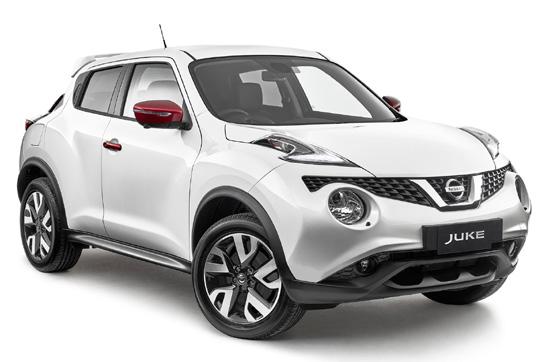
Lin alleged it wasn’t of acceptable quality for the purposes of section six of the Consumer Guarantees Act (CGA) because it had significant defects of a substantial character and she claimed she should be entitled to reject it.
Infinity Automotive merged with Continental Car Services in November 2020, so Lin lodged her claim against four respondents.
These were Continental Car Services, Sime Darby Motor Group (NZ) Ltd, which was connected to the former, Ingham Motors Auckland trading as City Nissan because it repaired the vehicle, and Nissan NZ.
The case
Two weeks after purchase, Lin complained about moisture in the tail-lights, which the trader replaced.
On January 21, 2020, after driving 28,297km in the vehicle, it suddenly lost power. City Nissan found the continuously variable transmission (CVT) belt was broken and replaced it under warranty.
Lin then reported, on or about June 15, 2021, that the cruise-control function was faulty and, the next day, the Juke’s temperature gauge was higher than normal.
The car was taken to Steve Roos Motor Services, which found water in its oil and considered it had an engine fault.
City Nissan also confirmed it had engine damage that caused coolant to mix with the oil. It found no evidence of external coolant or leaks.
After consultation with Nissan NZ, it replaced the engine. By then, the car had travelled 37,683km.
The finding
When a consumer alleges a vehicle isn’t of acceptable quality, a claim can be lodged against the supplier and or manufacturer.
Lin named four respondents because she was unsure which should have liability for her car’s faults under the CGA.
Having considered the evidence, the tribunal was satisfied Continental Car Services and Nissan NZ might be liable.
Continental Car Services was the supplier for purposes of the CGA. Even though it didn’t sell the vehicle to Lin, it had merged with Infinity Automotive.
Under section 225 of the Companies Act, the amalgamated company succeeds to all property, rights, powers and privileges –and all liabilities and obligations –of each of the merging companies from the date on the certificate of amalgamation, which in this case was November 30, 2020.
Nissan NZ also had liability as the manufacturer. But Lin’s claim against City Nissan and Sime Darby Motor Group was dismissed as neither was liable.
Steve Bavin, Nissan NZ’s technical services manager, said the transmission fault was caused by the failure of a link holding the CVT chain together.
He added it was a “unique issue” with no other record of this fault occurring in any other Juke in New Zealand.
Bavin considered the chain could have failed because the transmission was put under an “abnormal load” in that the vehicle might have hit a pothole, been overloaded or the driver had shifted gear while the car was being reversed.
He told the tribunal the underlying cause of the damage hadn’t been diagnosed because it was more economic to replace the engine with a second-hand unit than fix it.
Bavin also considered the Juke hadn’t been serviced appropriately and Continental Car Services queried whether the correct grade of engine oil had been used in the car.
He added moisture present in the tail-lights was normal, and that Nissan NZ had replaced them as a “good faith” offer and not because they were faulty.
Lin denied using the vehicle in a manner that could have caused any of its defects and believed the CVT chain failed prematurely.
The tribunal’s assessor said the overheating, and mixing of oil and coolant, showed the engine damage was most likely due to a cracked or porous cylinder head. He considered this wasn’t caused by the grade of oil used, nor by Lin failing to adequately service the vehicle.
The Juke had long-life coolant. The manufacturer’s guidance was that it should be periodically checked every 40,000km or two years, whichever occurred earliest, and then replaced at 160,000km or 96 months. Given its expected lifespan, it was highly unlikely the engine damage was caused by the coolant’s quality.
Consequently, the tribunal found it was more likely the engine and the CVT chain were inherently defective.
It also ruled the tail-lights’ condition was unacceptable.
The case: The buyer had only travelled 37,683km in her vehicle when it suffered transmission and engine failure, so she applied to reject it. However, the trader and Nissan NZ had fixed the transmission and wanted to replace engine. They claimed the consumer hadn’t adequately serviced the car.
The decision: The tribunal found it was likely the engine and CVT chain were inherently defective. It upheld the purchaser’s rejection of the vehicle.
At: The Motor Vehicle Disputes Tribunal, via video link.
Photos clearly showed large droplets of moisture inside them, which would cause the vehicle to fail a warrant of fitness inspection.
The defects meant the car wasn’t of acceptable quality because it hadn’t been as free of minor defects or as durable as a reasonable consumer would consider acceptable.
It was four years since purchase, and the tribunal noted CGA protections weren’t indefinite and lasted only as long as reasonable in the circumstances of each case.
However, Lin purchased a new vehicle and would have had high expectations as to its quality and durability.
It was ruled that the defects amounted to a failure of a substantial character under section 18 of the CGA, so Lin was entitled to reject the car and receive a refund of all amounts paid in respect of it.
Orders
Continental Car Services was ordered to pay Lin $29,495.
The adjudicator noted that having made orders against that company as the supplier, there was no need for any further consideration of the claim against Nissan NZ.
Although the marque had liability under the CGA as the manufacturer, remedies available against Nissan NZ didn’t include the right to rejection and a refund.
26 www.autofile.co.nz A 2017 Nissan Juke
disputes
Distance driven in car used as taxi means consumer law protection no longer valid
Background

Rajesh Verma purchased a 2014 Toyota Camry hybrid from Vehicle Direct Ltd on December 7, 2020, for $19,000 to use as a taxi.
Three months later, a warning message relating to the hybrid battery appeared. The trader performed repairs, but the warning returned in June 2021.
Verma claimed the hybrid battery needed to be replaced and wanted the tribunal to order the dealer or Toyota NZ to perform that work.
However, Verma didn’t name the marque as a respondent to his claim so its position on the matter was unknown.
Vehicle Direct stated it shouldn’t have liability because Verma had driven the car in his taxi business extensively since it was supplied.
The case
The vehicle’s odometer reading was 81,680km at purchase. Verma said a warning light flashed on its dashboard on March 9, 2021, or at around 94,631km.
He had the car assessed by Manawatu and TRC Toyota, which found a fault code relating to the hybrid battery. It established one of the cells was faulty and recommended replacing the entire battery at an estimated cost of $4,164.
Verma contacted Vehicle Direct, which offered to assess the Camry. He drove the car to Auckland on March 29, and the trader sent it to Auto Compliance and Repairs.
Its invoice showed the dealer was charged $2,300 to rebuild the battery. Although the evidence was unclear on precisely what was done, it seemed Auto Compliance and Repairs only replaced the faulty cell block and not the entire hybrid battery.
Verma returned to Palmerston North and continued to use the vehicle extensively in his taxi business.
For his peace of mind, Verma purchased a 48-month extended mechanical warranty for the car on April 14 from Toyota NZ, which cost $3,250. At that time, Manawatu and TRC Toyota performed an assessment on it and found no issues with its hybrid battery.
Verma continued to use the vehicle. However, the warning light returned on June 26 when the odometer was on about 114,000km.
The Camry was returned to Manawatu and TRC Toyota, which found another of the hybrid battery cells had degraded. It again recommended the whole battery be replaced.
Verma contacted Vehicle Direct and asked it to pay to have a hybrid battery installed by Manawatu and TRC Toyota.
The trader declined to pay the full replacement cost because Verma had used the car for business purposes and how far he had driven it. This came in at about 33,000km since purchase and more than 20,000km since the hybrid battery was fixed in March.
Instead, Vehicle Direct offered to pay 30 per cent of replacing the hybrid battery.
Verma then made a claim under the extended warranty he had bought from Toyota NZ, but this was declined because it was considered the battery fault was pre-existing and excluded from the policy’s coverage.
The finding
Verma alleged Toyota NZ should have had liability under the extended warranty. But he didn’t name the company as a party to
this claim, so the adjudicator had no jurisdiction to consider claims about the policy.
The tribunal could only consider those relating to the sale of a vehicle brought under the Consumer Guarantees Act (CGA), Fair Trading Act and Contract and Commercial Law Act.
It, therefore, declined to consider any claim against Toyota NZ and Verma would need to lodge a claim with the tribunal that had jurisdiction if he wanted to pursue any reliance on the extended warranty.
Consequently, the sole issue requiring the tribunal’s consideration in this case was if the Camry was of acceptable quality for the purposes of section six of the CGA.
Its hybrid battery required repair or replacement. However, the adjudicator wasn’t satisfied Vehicle Direct should have any liability for that remedial work.
Verma purchased the sixyear-old hybrid when it had an odometer reading of 81,600km.
A reasonable consumer must have realistic expectations as to the durability of hybrid battery cells in a vehicle of that age and mileage, and should understand the battery packs will degrade as a car is used and require replacement from time to time.
The buyer had driven the Camry extensively since purchase. The hybrid battery first required repair about three months after purchase by which time Verma had driven about 13,000km in it.
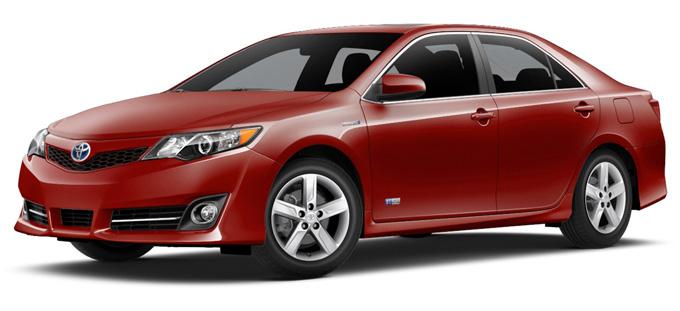
Vehicle Direct successfully repaired the first fault with the
The case: The buyer wanted the dealer or Toyota NZ to replace his 2014 Camry’s hybrid battery. The trader said it had remedied the problem, but the tribunal was unable to include the marque in this matter because it wasn’t named as a respondent.
The decision: The adjudicator found the dealer had adequately repaired the battery. It also told the purchaser he would need to bring another claim in regard to any issues with Toyota NZ’s extended warranty.
At: The Motor Vehicle Disputes Tribunal via video link.
hybrid battery and Verma drove the car a further 20,000km before a new problem relating to different cells in it arose.
He considered the battery had been faulty since at least March 9, 2021, but the evidence presented at the hearing showed Auto Compliance and Repairs adequately fixed it at that time. In particular, the tribunal noted Manawatu and TRC Toyota assessed the battery in April 2021 and found no issues.
Therefore, the tribunal was satisfied Auto Compliance and Repairs’ work last March was successful and issues that had since arisen related to different cells in the battery that had degraded as the vehicle was used.
Given the extent of that use –Verma had driven about 33,000km since purchase – the tribunal was satisfied the Camry had been of acceptable quality because it had been as free of minor defects and as durable as a reasonable consumer would consider acceptable in a car of that price, age and mileage that was used as a taxi.
Although Verma considered the vehicle should have a warranty of at least one year, protections in the CGA didn’t extend that far in this case particularly given the extent to which Verma has used it in such a short time.
Order
The application was
www.autofile.co.nz 27
dismissed.
A 2014 Toyota Camry hybrid
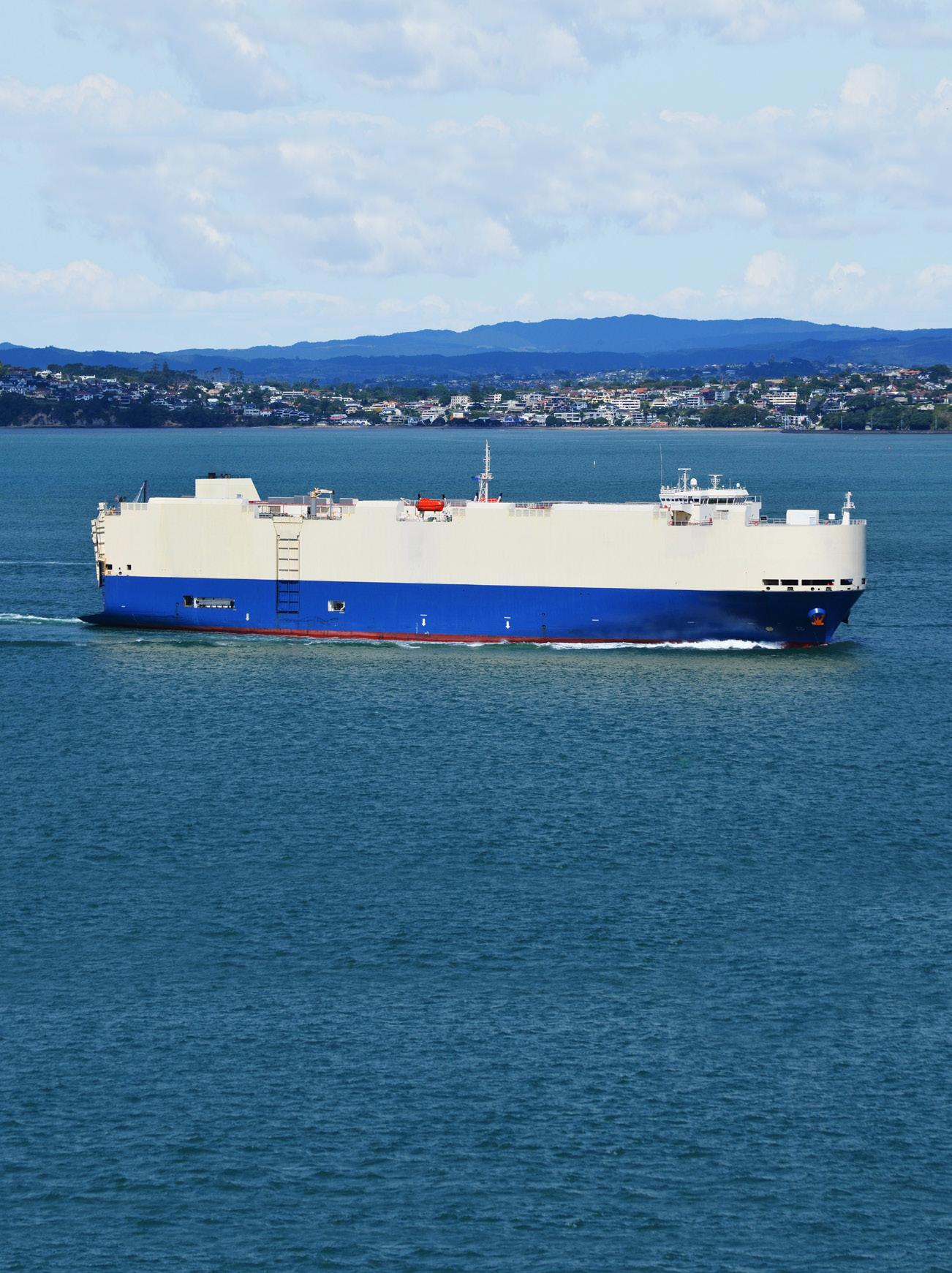


28 www.autofile.co.nz Phone 0800 ARMACUP (0800 276 2287) email enquiries@armacup.co.nz www.armacup.com Shipping to Port Calls Don Juan v2217 Paganella v2218 Paglia v2220 Moji Osaka 17 Sep 1 Oct 1 Nov Nagoya 18 Sep 2 Oct 2 Nov Yokohama 19 Sep 3 Oct 3 Nov Hitachinaka Auckland 3 Oct 18 Oct 18 Nov Lyttelton 7 Oct 22 Oct 23 Nov Wellington 8 Oct 24 Oct 25 Nov Nelson 11 Oct 25 Oct 22 Nov LATEST SCHEDULE JAPAN NEW ZEALAND
NORTHLAND
AUCKLAND
MARLBOROUGH
GISBORNE

402 240 39.1%
38.1%
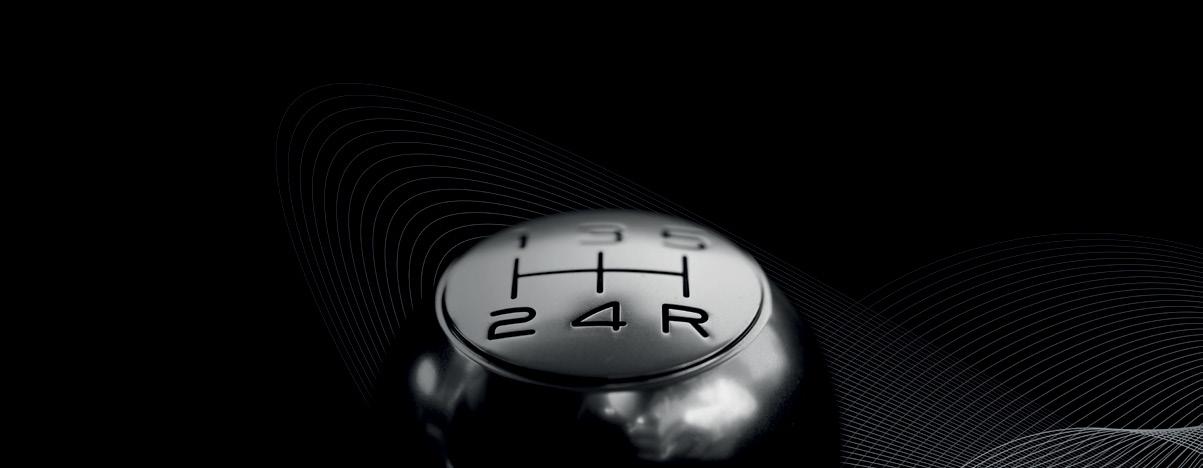
OTHERS (Chatham Islands, overseas, unknown)
NEW: 2021: USED: 2021:
NEW: 2021: USED: 2021: BAY OF PLENTY NEW: 2021: USED: 2021:
NEW: 2021: USED: 2021: HAWKE ’S BAY NEW: 2021: USED: 2021: MANAWATU WHANGANUI NEW: 2021: USED: 2021: WELLINGTON NEW: 2021: USED: 2021:
NEW: 2021: USED: 2021: CANTERBURY NEW: 2021: USED: 2021: OTAGO NEW: 2021: USED: 2021: SOUTHLAND WAIKATO NEW: 2021: USED: 2021: TARANAKI NEW: 2021: USED: 2021: NELSON NEW: 2021: USED: 2021: TASMAN NEW: 2021: USED: 2021: WEST COAST NEW: 2021: USED: 2021: 291 284 524 434 44.5% 34.6% 1,589 1,161 1,592 1,684 0.2% 31.1% 36 42 36 71 0.0% 40.8% 52 37 101 69 48.5% 46.4% 56 66 73 99 23.3% 33.3% 69 91 96 137 28.1% 33.6% 1,016 590 1,409 833 27.9% 29.2% 346 209 559 387
46.0% 160 119 257 208 37.7% 42.8% 245 125
47.9% 39 44 88 48 55.7% 8.3% 471 369 797 515 40.9% 28.3% 871 550 1,196 682 27.2% 19.4% 4,987 3,434 4,200 1,653 18.7% 107.7% 231 148 314 120 26.4% 23.3% Whangarei Auckland Hamilton Thames Tauranga Rotorua Gisborne Napier New Plymouth Wanganui Palmerston North Masterton Wellington Nelson Blenheim Greymouth Whangarei Auckland Hamilton Thames Tauranga Rotorua Gisborne Napier New Plymouth Wanganui Palmerston North Masterton Wellington Nelson Blenheim Greymouth Westport Christchurch Timaru Oamaru Dunedin Invercargill Whangarei Auckland Hamilton Thames Tauranga Rotorua Gisborne Napier New Plymouth Wanganui Palmerston North Masterton Wellington Nelson Blenheim Greymouth Whangarei Auckland Hamilton Thames A R OUND T H E COUNT R Y Septemb er 2022 7,375 2021: 7,426 0.7% Total imported used cars 10,603 2021: 11,850 10.5% Total new cars FINANCE TO SHIFT Y OUR BUSINESS I N TO TOP GEAR Your Vehicle Import Finance Specialist To find out more visit us at www.blackbirdf і nance.co.nz or call us on 0800 000 999
Imported
Toyota 2,725 1,876 45.3
Mazda
Nissan
Subaru
Honda
Volkswagen
BMW
Mitsubishi
Audi
Suzuki
Mercedes-Benz
Lexus
Ford
Volvo
Chevrolet
Land Rover
Porsche
Hyundai
Jaguar
Holden
Dodge
Jeep
-21.0
-27.0
384 -33.9 3.4% 3,542 4.0%
262 -36.3 2.3% 2,662 3.0%
190 -18.4 2.1% 1,665 1.9%
146 -7.5 1.8% 2,065 2.3%
150 -42.0 1.2% 1,831 2.0%
50 8.0 0.7% 579 0.6%
49 -32.7 0.4%
25 -4.0 0.3%
-64.3 0.3%
15 26.7 0.3%
14 28.6 0.2%
32 -56.3 0.2%
7 85.7 0.2%
37 -70.3 0.1%
21 -52.4 0.1%
0.7%
0.3%
0.4%
0.3%
0.2%
0.3%
0.2%
0.2%
Imported Passenger
Toyota Aqua 1,051 481 118.5 14.3% 9,712 10.8%
Toyota Prius 528 226 133.6 7.2% 4,469 5.0%
Mazda Axela 435 360 20.8 5.9% 3,793 4.2%
Toyota Corolla 278 102 172.5 3.8% 2,193 2.4%
Mazda Demio 239 126 89.7 3.2% 1,838 2.1%
Nissan Leaf 217 139 56.1 2.9% 3,016 3.4%
Volkswagen Golf 209 195 7.2 2.8% 2,152 2.4%
Subaru Impreza 208 184 13.0 2.8% 2,037 2.3%
Mazda CX-5 205 255 -19.6 2.8% 1,989 2.2%
Honda Fit 198 199 -0.5 2.7% 2,261 2.5%
Toyota C-HR 191 27 607.4 2.6% 1,272 1.4%
Nissan Note 187 78 139.7 2.5% 1,447 1.6%
Mitsubishi Outlander 170 228 -25.4 2.3% 2,339 2.6%
Nissan X-Trail 140 275 -49.1 1.9% 2,423 2.7%
Suzuki Swift 121 138 -12.3 1.6% 1,218 1.4%
Nissan Serena 118 75 57.3 1.6% 1,025 1.1%
Mazda Atenza 105 134 -21.6 1.4% 1,557 1.7%
Subaru XV 96 75 28.0 1.3% 741 0.8%
Mazda Premacy 83 89 -6.7 1.1% 985 1.1%
Toyota Sai 75 37 102.7 1.0% 503 0.6%
Toyota Camry 74 40 85.0 1.0% 534 0.6%
Toyota Vitz 64 36 77.8 0.9% 643 0.7%
Toyota Wish 63 88 -28.4 0.9% 786 0.9%
Toyota Auris 60 37 62.2 0.8% 496 0.6%
Volkswagen Polo 59 61 -3.3 0.8% 566 0.6%
Audi A3 55 47 17.0 0.7% 591 0.7%
Honda Vezel 51 19 168.4 0.7% 531 0.6%
BMW 116i 49 64 -23.4 0.7% 592 0.7%
Subaru Legacy 48 195 -75.4 0.7% 1,787 2.0%
BMW 320i 47 69 -31.9 0.6% 705 0.8%
Nissan Juke 47 44 6.8 0.6% 574 0.6%
Subaru Forester 44 89 -50.6 0.6% 857 1.0%
BMW Mini 41 35 17.1 0.6% 430 0.5%
Toyota 86 39 19 105.3 0.5% 336 0.4%
Mercedes-Benz A180 37 17 117.6 0.5% 310 0.3%
Others 1,743 3,143 -44.5 23.6% 32,804 36.6%
Total 7,375 7,426 -0.7 100.0% 89,512 100.0%
30 www.autofile.co.nz WHAT DO YOU WANT FROM YOUR VEHICLE SUPPLIER?
Vehicle Sales by Model - September 2022 MAKE MODEL SEP '22 SEP ’21 +/- % SEP '22 MKT SHARE 2022 YEAR TO DATE 2022 MKT SHARE
Passenger Vehicle Sales by Make - September 2022 MAKE SEP '22 SEP ’21 +/- % SEP '22 MKT SHARE 2022 YEAR TO DATE 2022 MKT SHARE
36.9% 28,380 31.7%
1,147 1,110 3.3 15.6% 11,483 12.8%
923 987 -6.5 12.5% 12,768 14.3%
473 692 -31.6 6.4% 6,855 7.7%
432 547
5.9% 6,293 7.0%
320 319 0.3 4.3% 3,426 3.8%
268 367
3.6% 4,289 4.8%
254
167
155
135
87
54
33
630
24
258
20 56
392
19
230
18
145
14
304
13
137
11
189
10
225 0.3% Mini 9 10 -10.0 0.1% 177 0.2% Peugeot 6 1 500.0 0.1% 70 0.1% Smart 5 2 150.0 0.1% 30 0.0% Daihatsu 4 0 400.0 0.1% 17 0.0% Kia 4 6 -33.3 0.1% 58 0.1% Renault 4 2 100.0 0.1% 46 0.1% Skoda 4 1 300.0 0.1% 20 0.0% Chrysler 3 24 -87.5 0.0% 249 0.3% Citroen 3 6 -50.0 0.0% 53 0.1% MG 3 0 300.0 0.0% 18 0.0% Pontiac 3 1 200.0 0.0% 21 0.0% Tesla 3 4 -25.0 0.0% 48 0.1% Alfa Romeo 2 4 -50.0 0.0% 29 0.0% Others 20 29 -31.0 0.3% 328 0.4% Total 7,375 7,426 -0.7 100.0% 89,512 100.0%
Transport agency hit by scam
Kotahi is warning car dealers of a textmessage scam that tells people their licences need to be renewed within 24 hours.
It says the texts have been coming from an Australian number starting +61, but they don’t make clear whether it is the driver licence or vehicle registration that needs renewing. They include a fake reminder number and link to a fraudulent website.
The transport agency says it never sends text-message reminders, and anyone who receives such alerts should report the scam and not click on the link.
It also warns of bogus emails claiming to be from Waka Kotahi about vehicle licences, refunds and overdue tolls.
Vehicle owners are reminded to ensure emails are genuine and come from an @nzta.govt.nz or @noreply.nzta.govt.nz address.
“Our emails will also include details about you, like your plate number, vehicle’s make and your current rego’s expiry date,” says an agency spokesman. “A scam email often misses specifics like this.”
STAFF BUY UP SHARES
Turners Automotive Group says uptake of its recently launched employee share scheme has been “strong”, with applications received from 42 per cent of staff.
The company says 105,999 shares were issued under the scheme, which represents 0.12 per cent of issued capital.
The scheme was a chance for permanent employees, both part and full-time, to invest $1,000 and
receive $1,500 worth of shares after a three-year vesting period.

Todd Hunter, chief executive officer, says: “We are extremely pleased with the uptake and hope we will have even more participate next year.
“Having such a high percentage of our team as owners of the business is a great thing. The ownership mindset combined with high team-engagement levels is a powerful combination.
Sales steady
There were 7,375 used-imported cars registered last month. That was down by 0.7 per cent compared to 7,426 in September 2021 to bring the year-to-date total to 89,512. The best-selling model was the Toyota Aqua with a market share of 14.3 per cent and 1,051 units. Next up were Toyota’s Prius and Mazda’s Axela on 528 and 435 respectively.
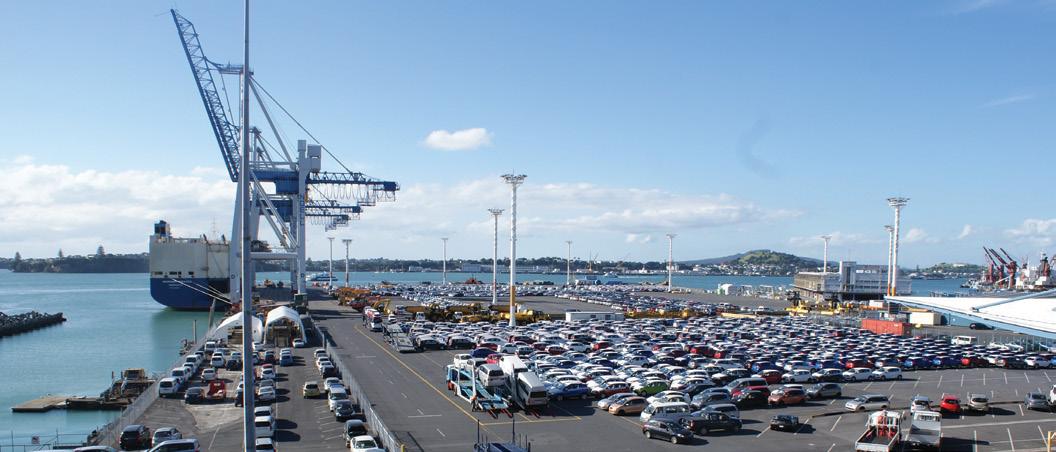
The top three marques were Toyota with 2,725, Mazda on 1,147 and Nissan with 923.
takeover, and was “comfortable” with Turners’ current business strategy.
BUSINESS NAME CHANGE
“Turners already benefits from high alignment with shareholder interests, with senior executives and board members controlling 27 per cent of issued capital in aggregate.”
Meanwhile, the company has dismissed the idea of taking over NZ Automotive Investments (NZAI), but it has discussed such a move.
The situation at NZAI, which owns 2 Cheap Cars, was raised during the discussion section of Turners’ annual meeting in August.
A shareholder asked: “Have you considered, or have you been tempted to consider, to give some assistance to one of our competitors?”
Grant Baker, chairman, replied: “No, short answer. We have discussed that and we wouldn’t see any advantage to us in doing that.”
After the meeting, Hunter said the company wasn’t considering making an offer for NZAI shares, or a
A South Island dealership has got a new name and expanded into a second site, despite most of its business now being completed online. What was Hopmans QEII Quality Cars in New Brighton, Christchurch, now trades as Hopman Motor Group, while the company opened another site on Flaxton Road earlier this year.
Andre Hopman, dealer principal, says the growth of the business led to the expansion and one of his sons, George, is managing the Rangiora operation, which will better serve North Canterbury.
While the group has an extra location, Hopman notes changes in the market following the Covid-19 pandemic restrictions have led to the business making 60 per cent of its sales online.
CAR SPENDING FLAT
Retail-card spending on vehicles was flat in August compared with July. When adjusted for seasonal effects, total was $202 million for the second consecutive month.
The amount splurged on cars by consumers using credit and debit cards has remained relatively stable so far this year, peaking at $209m in January and going no lower than $201m in February.
However, August’s figure was a substantial jump from the seasonally adjusted $120m splashed out in the same month of 2021 when coronavirus lockdowns impacted trade, reports Stats NZ.
www.autofile.co.nz 31 contact: Taka Arimoto email: arimoto@heiwa-auto.co.jp www.heiwa-auctions.com ü SOLID COMPANY ü QUALITY VEHICLES ü CHOICE & VARIETY OF STOCK ü EXPERIENCED AGENTS ü DEALER ONLY SUPPLIER ü GREAT VALUE FOR MONEY 0 5,000 10,000 15,000 20,000 25,000 Jan Feb Mar Apr May Jun Jul Aug Sep Oct Nov Dec 2018 2019 2020 2021 2022 Used Imported Passenger Registrations - 2018-2022
Waka
Vehicle crimes hit upward trend
The number of vehicles stolen and their attempted thefts climbed by 36.5 per cent in the 12 months to the end of June when compared with the previous year, reports AA Insurance.
The company’s data shows Nissan’s Tiida was the mostcommonly stolen model across New Zealand.
Next up were the Toyota Mark X and Aqua, with Mazda’s Atenza and Demio rounding out the top five.
AA Insurance reveals the increase in car crime was particularly bad for Auckland
where incidents jumped by 43 per cent year on year.
It notes vehicle collisions fell during Covid-19 lockdowns, but restrictions connected to the pandemic did little to stop car thefts with those parked on the road being increasingly targeted by criminals.
Beau Paparoa, head of motor claims, says the statistics are a reminder for owners to be vigilant when it comes to security.
He adds: “With the number of ram raids increasing, particularly in Auckland, it’s important to know that vehicles targeted for this activity tend to be at the
lower end of the value chain, more than five years old and often parked on the street.
“The increase in vehicle theft cannot solely be attributed to ram raids. We are also receiving reports about increased joyrides and cars apparently being stolen to get from A to B.
“Our claims data clearly shows that even simple security measures, such as using a steering-wheel lock, can be an effective deterrent against thieves looking for a quick smash and dash.”
Paparoa adds security systems and immobilisers are more expensive security options, but
USED IMPORTED PASSENGER VEHICLE ARRIVALS
are worth the investment to stop thieves from targeting vehicles.
DROP IN USED IMPORTS
There were 5,118 used cars imported into New Zealand during September.
Some 4,829 came from Japan, which represented 94.4 per cent of the overall total, and Australia accounted for 204. Next up were Singapore on 32, the UK with 22 and the US with 16.
The year-to-date total for used passenger vehicles crossing the border is now 70,668. That’s down from 101,100 and by 30.1 per cent compared to this time last year.
Door-to-Door vehicle shipping experts
32 www.autofile.co.nz
ContaCt us today!
To and from Japan, USa, UK, aUSTralia, Singapore, and The pacific
Ph +64 9 303 0075 www.mmnz.biz www.mmnz.biz
20,000 19,000 18,000 17,000 16,000 15,000 14,000 13,000 12,000 11,000 10,000 9,000 8,000 7,000 6,000 4,000 JAN FEB MAR APR MAY JUN JUL AUG SEPT OCT NOV DEC 2014 2015 2017 2021 2018 2020 2019 2016 2013 2022 Used Imported Passenger Vehicles By Country Of Export COUNTRY OF EXPORT 2022 2021 2020 JAN ’22 FEB ’22 MAR ’22 APR ’22 MAY ’22 JUN ’22 JUL ’22 AUG ’22 SEPT ’22 SEP SHARE % 2022 TOTAL 2021 TOTAL MRKT SHARE 2020 TOTAL MRKT SHARE Australia 262 235 226 233 172 234 192 186 204 4.0% 1,944 3,072 2.4% 4,185 3.9% Great Britain 60 41 59 35 55 70 23 27 22 0.4% 392 1,259 1.0% 690 0.6% Japan 6,490 6,751 7,477 7,636 11,497 8,254 6,206 8,295 4,829 94.4% 67,435 123,508 94.8% 100,994 92.9% Singapore 46 69 33 47 33 38 24 24 32 0.6% 346 1,378 1.1% 1,846 1.7% USA 44 20 75 33 59 30 42 44 16 0.3% 363 697 0.5% 480 0.4% Other countries 31 33 20 15 17 23 19 35 15 0.3% 208 403 0.3% 468 0.4% Total 6,933 7,149 7,890 7,999 11,833 8,649 6,506 8,611 5,118 100.0% 70,688 130,317 100.0% 108,663 100.0%
Fair trading laws updated
Amendments to the Fair Trading Act (FTA) now in place aim to strengthen protections for businesses and consumers, and tackle unscrupulous business practices.
Anna Rawlings, who chairs the Commerce Commission, says the changes include a new prohibition against “unconscionable conduct”.
This is business activity that substantially departs from New Zealand’s generally accepted or expected standards of behaviour –for example, commercial conduct that goes against good conscience.

“Good business conscience is measured against the values and
norms of modern society, and expectations of what’s right and proper according to those values and norms,” explains Rawlings.
“Those values and norms can include acting honestly, fairly and without deception or unfair pressure. This is conduct that’s more than hard commercial bargaining, and is clearly unfair and unreasonable.”
In addition, businesses have become protected from unfair terms in standard form small-trade contracts, which are also known as “take it or leave it” contracts.
Many standard commercial supply agreements may also be
standard form small-trade contacts.
“Terms in standard form smalltrade contracts can be assessed as unfair under the new law if, at the time the contract is entered into, it forms part of a trading relationship with an actual or expected annual value of less than $250,000.”
Amendments to the FTA also offer extra protections for people approached by door-to-door sellers.
The regulator has released guidance on its website for businesses and consumers wanting to know more about the amended legislation.
Visit www.comcom.govt.nz for more information.
It encourages businesses to review and adjust their practices to ensure they are compliant, and to steer clear of conduct that may breach these provisions and cause harm to other businesses or consumers.
BOOST FOR BUSINESS
There were 15,986 second-hand cars sold to the public by traders last month. That was up from 12,024 units, or by 33 per cent, compared to September 2021.

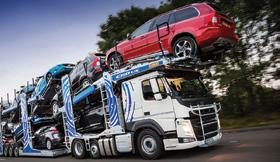
There were 12,113 trade-ins last month. This total represented an increase of 14.5 per cent from 10,576 vehicles.
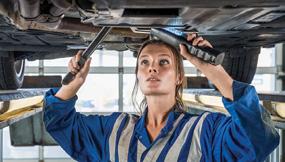
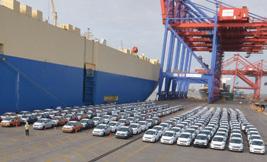
Northland
Auckland 5,526 1,896
Waikato
Plenty
Gisborne
Hawke’s Bay
Manawatu-Whanganui
203 8.9
5,416 2,165 150.2
1,271 -17.9
-15.2
-51.6
-20.6
-3.4
-29.4
1,110 -6.3
www.autofile.co.nz 33
SECONDHAND CAR SALES - September 2022 DEALER TO PUBLIC PUBLIC TO PUBLIC PUBLIC TO DEALER REGION SEP '22 SEP ’21 +/- % MARKET SHARE SEP '22 SEP ’21 +/- % SEP '22 SEP ’21 +/- %
569 378 50.5 3.56 1,789 1,563 14.5 221
191.5 34.57 11,937 6,341 88.3
1,575 1,409 11.8 9.85 3,732 3,960 -5.8 1,044
Bay of
1,044 989 5.6 6.53 2,630 2,845 -7.6 588 693
123 132 -6.8 0.77 381 374 1.9 31 64
582 604 -3.6 3.64 1,314 1,377 -4.6 358 451
Taranaki 374 357 4.8 2.34 1,075 1,051 2.3 198 205
878 902 -2.7 5.49 2,036 2,159 -5.7 587 831
Wellington 1,426 1,551 -8.1 8.92 3,072 3,385 -9.2 1,040
Tasman 150 139 7.9 0.94 429 461 -6.9 25 12 108.3 Nelson 137 157 -12.7 0.86 402 496 -19.0 153 144 6.3 Marlborough 166 147 12.9 1.04 370 393 -5.9 67 126 -46.8 West Coast 99 132 -25.0 0.62 312 298 4.7 43 44 -2.3 Canterbury 2,208 2,123 4.0 13.81 4,876 5,246 -7.1 1,747 2,132 -18.1 Otago 754 694 8.6 4.72 1,708 2,018 -15.4 443 593 -25.3 Southland 316 366 -13.7 1.98 869 1,007 -13.7 152 272 -44.1 Other 59 48 22.9 0.37 200 142 40.8 0 260 -100.0 NZ Total 15,986 12,024 33.0 100.00 37,132 33,116 12.1 12,113 10,576 14.5 Visit autofile.co.nz/jobs to view the latest jobs in the automotive industry
New
Mitsubishi 1,650 1,917 -13.9 15.6% 13,206 15.4%
Tesla 1,554 1,065 45.9 14.7% 4,193 4.9%
Toyota 1,509 1,990 -24.2 14.2% 11,937 13.9%
Kia 808 828 -2.4 7.6% 9,180 10.7%
Suzuki 755 725 4.1 7.1% 6,024 7.0%
Hyundai 571 674 -15.3 5.4% 6,022 7.0%
MG 434 448 -3.1 4.1% 3,887 4.5%
Mazda 394 570 -30.9 3.7% 4,301 5.0%
Haval 277 388 -28.6 2.6% 1,716 2.0%
Volkswagen 274 349 -21.5 2.6% 2,086 2.4%
BYD 221 0 22,100.0 2.1% 689 0.8%
Subaru 208 271 -23.2 2.0% 1,882 2.2%
Honda 204 301 -32.2 1.9% 2,931 3.4%
Skoda 184 180 2.2 1.7% 1,546 1.8%
Ford 174 367 -52.6 1.6% 1,904 2.2%
Mercedes-Benz 151 251 -39.8 1.4% 1,630 1.9%
Audi 117 145 -19.3 1.1% 1,249 1.5%
BMW 116 197 -41.1 1.1% 1,275 1.5%
Land Rover 106 63 68.3 1.0% 1,196 1.4%
Polestar 103 0 10,300.0 1.0% 609 0.7%
Peugeot 97 225 -56.9 0.9% 1,185 1.4%
Mini 96 45 113.3 0.9% 646 0.8%
Nissan 76 263 -71.1 0.7% 1,568 1.8%
Lexus 72 67 7.5 0.7% 838 1.0%
Volvo 70 71 -1.4 0.7% 623 0.7%
SsangYong 69 83 -16.9 0.7% 551 0.6%
Porsche 51 58 -12.1 0.5% 512 0.6%
Cupra 41 2 1,950.0 0.4% 233 0.3%
Jaguar 34 23 47.8 0.3% 351 0.4%
Seat 31 10 210.0 0.3% 86 0.1%
Fiat 25 14 78.6 0.2% 161 0.2%
Jeep 25 84 -70.2 0.2% 399 0.5%
Renault 20 19 5.3 0.2% 211 0.2%
Alfa Romeo
Isuzu
Citroen
Maserati
Aston
Can-Am
Ferrari
Lamborghini
New Passenger Vehicle Sales by Model
MAKE
Tesla Model Y 1,502 0 150,200.0 14.2% 2,092 2.4%
Mitsubishi Outlander 867 961 -9.8 8.2% 7,140 8.3%
Mitsubishi ASX 410 472 -13.1 3.9% 2,381 2.8%
Suzuki Swift 337 155 117.4 3.2% 2,722 3.2%
Toyota Yaris Cross 328 133 146.6 3.1% 1,203 1.4%
MG ZS 321 328 -2.1 3.0% 2,299 2.7%
Toyota RAV4 319 573 -44.3 3.0% 4,282 5.0%
Mitsubishi Eclipse Cross 263 426 -38.3 2.5% 2,705 3.1%
Hyundai Ioniq 235 90 161.1 2.2% 1,268 1.5%
BYD Atto 3 221 0 22,100.0 2.1% 689 0.8%
Toyota Corolla 202 744 -72.8 1.9% 1,790 2.1%
Mazda CX-5 200 296 -32.4 1.9% 1,855 2.2%
Haval H6 176 174 1.1 1.7% 898 1.0%
Kia Seltos 174 102 70.6 1.6% 1,424 1.7%
Suzuki Vitara 174 232 -25.0 1.6% 831 1.0%
Hyundai Kona 171 242 -29.3 1.6% 2,054 2.4%
Toyota Yaris 163 90 81.1 1.5% 1,110 1.3%
Kia Sportage 159 265 -40.0 1.5% 2,437 2.8%
Toyota Highlander 154 194 -20.6 1.5% 1,414 1.6%
Kia Stonic 150 191 -21.5 1.4% 1,811 2.1%
Kia Niro 131 92 42.4 1.2% 869 1.0%
Suzuki Jimny 109 161 -32.3 1.0% 1,076 1.3%
Polestar Polestar 2 103 0 10,300.0 1.0% 609 0.7%
Haval Jolion 101 209 -51.7 1.0% 818 1.0%
Honda CR-V 97 79 22.8 0.9% 815 0.9%
Volkswagen Tiguan 95 141 -32.6 0.9% 614 0.7%
Subaru Outback 93 140 -33.6 0.9% 789 0.9%
Honda Jazz 92 147 -37.4 0.9% 1,773 2.1%
Mitsubishi Pajero Sport 89 31 187.1 0.8% 630 0.7%
Toyota Fortuner 88 96 -8.3 0.8% 469 0.5%
Toyota C-HR 72 41 75.6 0.7% 541 0.6%
Hyundai Tucson 70 95 -26.3 0.7% 938 1.1%
T-Roc
12 41.7 0.2%
63 -73.0 0.2%
-63.6
0.1%
0.3%
0.6%
0.6%
0.6%
-43.5 0.6%
0.6%
0.3%
0.8%
0.5%
0.9%
0.6%
1.0%
0.2%
-41.9
34 www.autofile.co.nz
Passenger Vehicle Sales by Make - September 2022 MAKE SEP '22 SEP ’21 +/- % SEP '22 MKT SHARE 2022 YEAR TO DATE 2022 MKT SHARE
17
81
17
229
16 44
0.2% 253 0.3% Bentley 6 0 600.0 0.1% 39 0.0%
6 2 200.0 0.1% 53 0.1%
Martin 5 3 66.7 0.0% 52 0.1%
4 4 0.0 0.0% 52 0.1%
3 1 200.0 0.0% 21 0.0% LDV 3 24 -87.5 0.0% 138 0.2%
2 0 200.0 0.0% 23 0.0% Chevrolet 1 0 100.0 0.0% 21 0.0% Others 6 4 50.0 0.1% 188 0.2% Total 10,603 11,850 -10.5 100.0% 85,977 100.0%
- September 2022
MODEL SEP '22 SEP ’21 +/- % SEP '22 MKT SHARE 2022 YEAR TO DATE 2022 MKT SHARE
Volkswagen
68 62 9.7
291
MG 3 66 50 32.0
700
Toyota Landcruiser Prado 63 21 200.0
452
Hyundai Santa Fe 61 108
790
Mazda CX-3 61 27 125.9
493
Kia Sorento 60 32 87.5 0.6% 898
Suzuki S-Cross 58 0 5,800.0 0.5% 144
Nissan X-Trail 57 95 -40.0 0.5% 1,040 1.2% Peugeot 3008 54 93
0.5% 390 0.5% Toyota Corolla Cross 54 0 5,400.0 0.5% 54 0.1% Skoda Kodiaq 53 56 -5.4 0.5% 419 0.5% Subaru Forester 53 25 112.0 0.5% 449 0.5% Ford Escape 52 30 73.3 0.5% 490 0.6% Others 2,177 4,351 -50.0 20.5% 27,021 31.4% Total 10,603 11,850 -10.5 100.0% 85,977 100.0% new cars
Standard to bump up prices
S
ubaru of New Zealand is warning would-be buyers of its new turbocharged Outback 2.4 that they may have to pay thousands of dollars more because of the clean car standard.
Managing director Wallis Dumper says his staff have been working hard with the Subaru Corporation factory in Japan “to make the 2.4T’s arrival a reality”.
With the model’s two variants set to hit our shores in December, “Kiwis wanting one for the summer holidays will need to order theirs to be first in the queue as we expect limited arrivals this side of Christmas”, he adds.
“We’re also expecting extra fees to be applied to most new petrolengined cars early next year as part of the government’s ambition to be carbon neutral by 2050.”
Dumper says that with the government planning to introduce the clean car standard next year, the Outback 2.4T will incur additional costs. “We are awaiting clarification from the government,” he adds.
“The standard will not only affect Subaru, but the entire New Zealand automotive industry. The reality is that many new petrol vehicles may cost customers thousands more than they do today.”
demand, we looked to Sixt for a clever alternative to traditional ownership.”
The collaboration has resulted in the bespoke “Rent an R” programme from two Sixt locations in Auckland – Grey Lynn and Auckland Airport.
It allows residents and visitors to rent the performance vehicles for up to a week. If an R model purchase follows at the end of the period,
Charging to top
Volkswagen NZ reimburses the customer’s rental fees.
Tobin adds: “As we concluded the pre-sales phase for these models, feedback from our dealer network indicated that for Kiwis to experience the best of these R models, they must get behind the wheel for an extended period.”
In addition to providing a high-performance solution for casual rental consumers, the offering enables a “try before you buy” opportunity with a particular emphasis on limited stock availability should any wouldbe buyer look to take full ownership of a new R model over coming months.
There were 10,603 new cars registered in September. This was down by 10.5 per cent from 11,850 in the same month of last year.
Tesla’s Model Y was the top model on 1,502 units. Mitsubishi’s Outlander was second on 867 with its ASX third on 410. Mitsubishi topped the marques’ ladder with 1,650 registrations. Second and third were Tesla on 1,554 and Toyota with 1,509.
As a result, Subaru of NZ is seeking to secure extra 2.4T models this year to satisfy demand and help buyers avoid paying more fees than they will once the new regulations are implemented.
TRY BEFORE BUYING
Volkswagen NZ has teamed up with new-mobility company Sixt to offer rental and subscription services.
The initiative is a sign of future intentions with the car industry facing major supply issues.
Jake Tobin, marketing manager of Volkswagen NZ, says: “With the perfect storm of restricted global production, and pre-sold stock of Golf R and Tiguan R in high
officer of Sixt NZ, adds: “Volkswagen recognises the growing market for flexible solutions and once supply improves we look forward to more exciting collaborations.”
PLUGGING INTO MARKET
The chief operating officer of Mitsubishi Motors NZ says its rapid gains in market share over the past five years have been largely down to the hard work of its dealer network, and successfully navigating supply difficulties faced by the industry globally.
Highlighting the success of its plug-in hybrid (PHEV) range, Daniel Cook says his team takes its responsibility in helping to lower the country’s vehicle emissions “very seriously”.
“Kiwis have embraced our technology, and the Outlander and Eclipse Cross PHEVs are wellequipped to meet that challenge.
“Our connection to Sixt is important as it allows us to offer a range of personalised mobility solutions that sit outside traditional car ownership,” says Tobin. “Stay tuned for further initiatives.”
Dane Fisher, chief executive
Passenger Registrations - 2018-2022
“Our target for 2022 is for PHEVs to make up one-third of our total sales, a feat that can’t be matched by our closest competitors. We have the right product to suit New Zealand’s needs in this changing climate and our sales are testament to that.”
‘BENEFITS’ OF NEW CARS
MG Motor has been trying to lure consumers away from buying second-hand with its MG3 priced at $19,990.
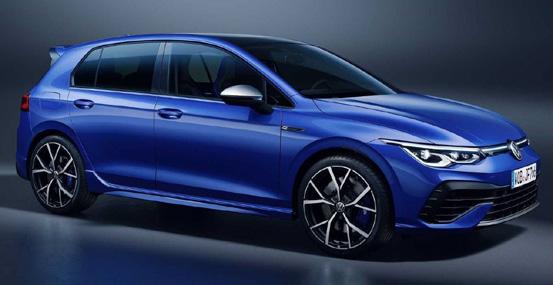
Peter Ciao, chief executive of MG Motor Australia and New Zealand, says this makes the model number one when it comes to the country’s “best-value new car”.
He adds: “Every MG Motor vehicle has driveaway pricing, meaning the advertised price is the final price. Transparent pricing is fair and honest, and means you know exactly how much a new MG costs. There are no added fees or on-roads.
“One of the benefits of buying a new car is you’re the first owner, you know who’s been driving it and, importantly, how it has been driven.”
www.autofile.co.nz 35 new cars 0 1,000 2,000 3,000 4,000 5,000 6,000 7,000 8,000 9,000 10,000 11,000 12,000 Jan Feb Mar Apr May Jun Jul Aug Sep Oct Nov Dec 2018 2019 2020 2021 2022 New
The Volkswagen Golf R
Range to offset ute’s emissions
NZ is confident it will meet its average emissions
under the clean car standard over coming years despite the Ranger making up a sizeable chunk of its sales.
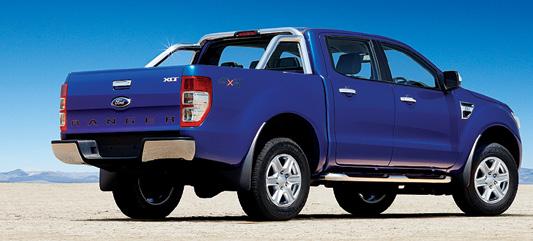
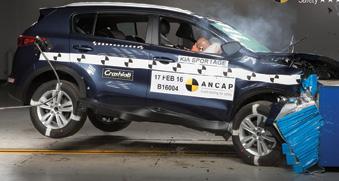
Simon Rutherford, managing director, says the carbon dioxide (CO2) figures of the nextgeneration ute will be offset by lower-emitting models it plans to bring to its range here.
Some Ranger variants face the maximum $5,175 penalty under the clean car discount, which is payable on first registration by the consumer.
When the standard, which is slated to start next year, kicks in importers will also face charges
unless they meet average CO2 targets that will get tougher over time.
“Despite the V6 mix going up, we’re confident because we’ve done the homework out
to 2031,” says Rutherford. “We will proportionally reduce on the Ranger as we get other products in, but expect it to continue to be our core product.”
He suggests the utility could
make up 60 per cent of the marque’s volumes under clean car standard targets. This is because models such as the Puma and Focus mild hybrids, an Escape hybrid and the new Mustang Mach-E will assist in bringing CO2 averages down. The e-Transit, in Custom and full-size variants, will also help achieve this.
Rutherford can’t say if Ford NZ can avoid putting Ranger prices up from 2023.
“We don’t know to what degree the clean car discount/fee is really going to impact the segment. We would be stupid to think it wasn’t going to affect it, but it hasn’t settled enough between us, supply constraints and competitors to see
New Commercial Sales by Model - September 2022
Ford Ranger 1,043 1,407 -25.9 24.4% 7,449 20.3%
Toyota Hilux 989 648 52.6 23.1% 7,621 20.7%
Mitsubishi Triton 379 196 93.4 8.9% 5,317 14.5%
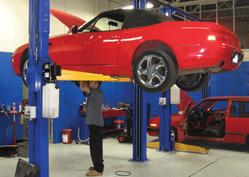
Nissan Navara 198 204 -2.9 4.6% 1,652 4.5%
Toyota Hiace 140 229 -38.9 3.3% 1,335 3.6%
Mercedes-Benz Sprinter 99 48 106.3 2.3% 524 1.4%
Isuzu D-Max 84 208 -59.6 2.0% 1,563 4.3%
Mitsubishi Express 66 60 10.0 1.5% 441 1.2%
Isuzu F Series 65 27 140.7 1.5% 361 1.0%
Isuzu N Series 65 56 16.1 1.5% 358 1.0%
LDV G10 59 76 -22.4 1.4% 425 1.2%
-65.9
-11.4
-47.1
Foton
Mazda BT-50 59 173 -65.9 1.4% 629 1.7%
Fiat Ducato 44 40 10.0 1.0% 466 1.3%
LDV T60 39 81 -51.9 0.9% 536 1.5%
LDV Deliver 9 37 50 -26.0 0.9% 423 1.2%
LDV eDeliver 3 36 17 111.8 0.8% 164 0.4%
Hyundai Staria Load 35 33 6.1 0.8% 420 1.1%
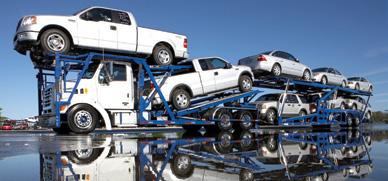

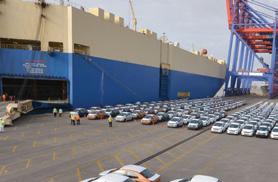
Volkswagen Amarok 34 44 -22.7 0.8% 224 0.6%
Foton Aumark 33 7 371.4 0.8% 186 0.5%
Hino 300 33 37 -10.8 0.8% 262 0.7%
Others 741 992
36 www.autofile.co.nz Know what’s going on in YOUR industry 0 1,000 2,000 3,000 4,000 5,000 6,000 7,000 8,000 9,000 10,000 Jan Feb Mar Apr May Jun Jul Aug Sep Oct Nov Dec 2018 2019 2020 2021 2022 New Commercial Sales - 2018-2022 New Commercial Sales by Make - September 2022 MAKE SEP '22 SEP ’21 +/- % SEP '22 MKT SHARE 2022 YEAR TO DATE 2022 MKT SHARE Toyota 1,159 937 23.7 27.1% 9,193 25.0% Ford 1,063 1,502 -29.2 24.8% 7,774 21.1% Mitsubishi 445 256 73.8 10.4% 5,759 15.7% Isuzu 243 297 -18.2 5.7% 2,433 6.6% Nissan 198 204 -2.9 4.6% 1,653 4.5% LDV 194 247 -21.5 4.5% 1,818 4.9% Fuso 125 92 35.9 2.9% 950 2.6% Mercedes-Benz 110 66 66.7 2.6% 613 1.7% Hino 83 83 0.0 1.9% 704 1.9% Volkswagen 78 106 -26.4 1.8% 657 1.8% Scania 74 51 45.1 1.7% 383 1.0% Mazda 59 173
1.4% 629 1.7% Fiat 44 40 10.0 1.0% 467 1.3% Chevrolet 40 33 21.2 0.9% 182 0.5% Renault 39 44
0.9% 234 0.6% Hyundai 37 70
0.9% 474 1.3%
35 7 400.0 0.8% 216 0.6% Ram 35 60 -41.7 0.8% 304 0.8% Iveco 33 41 -19.5 0.8% 271 0.7% UD Trucks 27 13 107.7 0.6% 212 0.6% Others 157 311 -49.5 3.7% 1,841 5.0% Total 4,278 4,633 -7.7 100.0% 36,767 100.0%
MAKE MODEL SEP '22 SEP ’21 +/- % SEP '22 MKT SHARE 2022 YEAR TO DATE 2022 MKT SHARE
-25.3 17.3% 6,411 17.4% Total 4,278 4,633 -7.7 100.0% 36,767 100.0% new commercials
Ford
targets
where that segment is going.
“What we know is that for the first couple of years, the slope of the [standard’s] curve isn’t too painful, but then it is.
“We’ve done the maths. We believe that with our current plan, we will carry credits. It’s still a challenge in 2025-26, but we’re serious about compliance. The important thing is we have to deliver our other volumes.
“For us, and probably our competitors as we cross the line into 2023, I would anticipate there will still be some pricing [change].”
DEMAND BEATS SUPPLY
Great Lake Motor Distributors reports SsangYong has been performing well in the market.
“The volume we’ve been getting from SsangYong has been restricted over the past few
months,” says Andrew Bayliss, general manager. “Now that SsangYong has been sold, we have new owners. Once production comes back on-steam, global shipping will be the only delay.
“It has been a tough year for the whole industry. There is a huge demand for commercials and demand has been outstripping

supply in the short term. We do see supply increasing over the next six months from what manufacturers have been telling us. Time will tell and we aren’t alone in that regard.”
ELECTRIC UTE ON WAY
An electrified Triton is in the works with a senior Mitsubishi executive revealing the off-roader is set to be
offered as a battery electric vehicle (BEV) or plug-in hybrid after the new model arrives in 2023.
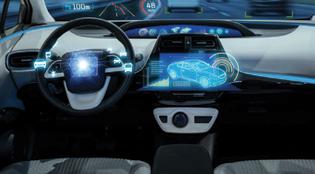
Kentaro Honda, segment chief vehicle engineer, has told media across the ditch: “We have a choice of hybrid or BEV. But I think for the Australian market that a plug-in hybrid is a good solution.”
RANGER TOPS LADDER
There were 4,278 new commercials registered last month. That was down by 7.7 per cent per cent when compared to 4,633 in the same month of last year.
The Ford Ranger was the most popular model thanks to 1,043 sales, with Toyota’s Hilux close behind on 989.
There were 557 used-imported commercials registered last month compared to 469 in September 2021 for an 18.8 per cent increase.
Used Commercial Sales by Model - September 2022
Toyota Hiace 149 112 33.0 26.8% 1,558 25.7%
Nissan NV350 70 52 34.6 12.6% 931 15.4%

Isuzu Elf 41 21 95.2 7.4% 284 4.7%
Hino Dutro 34 31 9.7 6.1% 358 5.9%
Toyota Dyna 25 20 25.0 4.5% 255 4.2%
Nissan NV200 18 2 800.0 3.2% 134 2.2%
Fuso Canter 15 16 -6.3 2.7% 178 2.9%
Hino Ranger 14 10 40.0 2.5% 132 2.2%
Nissan Atlas 12 8 50.0 2.2% 103 1.7%

Nissan Caravan 12 27 -55.6 2.2% 236 3.9%
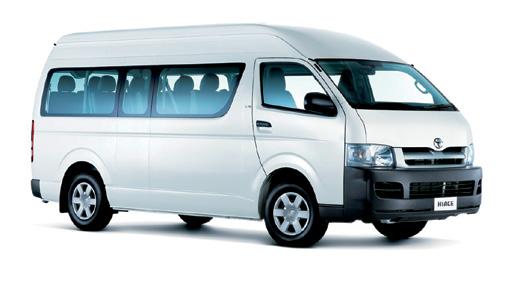
Isuzu Forward 11 11 0.0 2.0% 105 1.7%
Toyota Regius 10 3 233.3 1.8% 91 1.5%
Toyota Toyoace
Toyota Hilux
Daihatsu Hijet
Chevrolet Colorado
Ford Ranger
Volkswagen Amarok
Mazda
Mazda
-43.8 1.6% 105 1.7%
60.0 1.4% 85 1.4%
40.0 1.3%
1.5%
-25.0 1.1% 77 1.3%
-61.5 0.9%
1.7%
0.5%
0.8%
0.4%
www.autofile.co.nz 37
0 500 1,000 1,500 2,000 2,500 Jan Feb Mar Apr May Jun Jul Aug Sep Oct Nov Dec 2018 2019 2020 2021 2022 Used Commercial Sales - 2018-2022 Used Commercial Sales by Make - September 2022 MAKE SEP '22 SEP ’21 +/- % SEP '22 MKT SHARE 2022 YEAR TO DATE 2022 MKT SHARE Toyota 210 162 29.6 37.7% 2,165 35.7% Nissan 124 98 26.5 22.3% 1,549 25.6% Isuzu 54 39 38.5 9.7% 433 7.1% Hino 53 43 23.3 9.5% 520 8.6% Mitsubishi 22 26 -15.4 3.9% 296 4.9% Ford 12 26 -53.8 2.2% 217 3.6% Volkswagen 11 5 120.0 2.0% 48 0.8% Chevrolet 10 7 42.9 1.8% 74 1.2% Holden 9 13 -30.8 1.6% 131 2.2% Mazda 9 7 28.6 1.6% 97 1.6% Daihatsu 7 5 40.0 1.3% 92 1.5% UD Trucks 5 1 400.0 0.9% 45 0.7% Mercedes-Benz 3 1 200.0 0.5% 23 0.4% Suzuki 3 5 -40.0 0.5% 64 1.1% Iveco 2 1 100.0 0.4% 17 0.3% LDV 2 0 200.0 0.4% 8 0.1% MAN 2 1 100.0 0.4% 15 0.2% Renault 2 3 -33.3 0.4% 12 0.2% Scania 2 0 200.0 0.4% 8 0.1% Volvo 2 2 0.0 0.4% 17 0.3% Others 13 24 -45.8 2.3% 230 3.8% Total 557 469 18.8 100.0% 6,061 100.0%
MAKE MODEL SEP '22 SEP ’21 +/- % SEP '22 MKT SHARE 2022 YEAR TO DATE 2022 MKT SHARE
9 16
8 5
7 5
91
6 8
5 13
106
5 4 25.0 0.9% 29
BT-50 4 3 33.3 0.7% 46
Titan 4 4 0.0 0.7% 25
Others 98 98 0.0 17.6% 1,132 18.7% Total 557 469 18.8 100.0% 6,061 100.0% Subscribe now at www.autofile.co.nz/subscribe INSIGHT Keep up to date with the latest automotive news used commercials t
Marque makes electric pledge
Toyota Motor Corporation says it will be ready to sell only zero-emissions vehicles (ZEVs) in Europe by 2035.
The world’s biggest carmaker has also set an intermediate goal for at least half of its sales in western Europe to be ZEVs by the end of the decade.
While the objectives align Toyota with “green deal” measures proposed by the EU in July 2021, the company has qualified its target for 13 years’ time assuming the bloc will have sufficient infrastructure for battery recharging and hydrogen refuelling.
Member states have been wrangling over an end date for internal combustion engines (ICEs), with France advocating for plug-in hybrids to be allowed for longer and Italy seeking to shield

supercars from the phase-out.
Toyota’s commitments for the EU were somewhat unexpected after executives long sought to preserve a role for traditional hybrids to reduce tailpipe emissions until battery electric vehicles (BEVs) are attainable for more consumers.
Other marques have outlined similar goals to Toyota’s.
Volkswagen, for example, plans to stop selling ICEs in Europe between 2033 and 2035.
Ford’s passenger-vehicle range will be all-electric by 2030, and Mercedes-Benz has pledged to be ready to go all-electric by the end of the decade.
Announcements by companies that haven’t reduced as much carbon dioxide (CO2) emissions from their fleets – coupled with authorities focusing on how soon
Dealer stock of new cars in New
the automotive industry can go fully electric – have frustrated Toyota in the past.
There has been a “sort of press war going on with who will promise the most”, says Gill Pratt, Toyota’s chief scientist, but such pledges “aren’t removing any CO2 from the air”.
She adds the way to reduce the most net-carbon emissions globally will be to keep offering petrol hybrids and plug-in hybrids until BEV batteries are cheaper and cleaner to produce, and when charging infrastructure with renewable energy is more widely available.
That said, the marque has started to roll out its first fully electric SUV, the bZ4X, although it’s slated to arrive in New Zealand next year. This model is the first of seven in the bZ series, which stands for “beyond zero”.
Imports soar
New-car imports came in at 11,422 in September – the biggest monthly total of 2022. It was 30.9 per cent higher than in the same month of 2021 and 14.4 per cent more than August’s 9,981 units.
Registrations of new passenger vehicles totalled 10,603 last month, which was down 2.9 per cent from August and a drop of 10.5 per cent from September 2021.
The numbers have resulted in the stock of new cars still to be registered increasing by 819 to 81,454. Daily registrations, as averaged over the previous 12 months, stand at 312 units per day – up from 290 a year earlier.
September’s results mean stock at-hand has increased to 261 days, or 8.6 months, if sales continue at the current rate. In the same month of 2021, stock at-hand was at 284 days.
38 www.autofile.co.nz
Zealand CAR SALES VARIANCE STOCK DAILY SALES - 12-MONTH AVERAGE DAYS STOCK AT HANDIMPORTED REGISTERED Sep ‘21 8,725 11,853 -3,128 82,450 290 284 Oct ‘21 12,086 9,248 2,838 85,288 293 291 Nov ‘21 8,119 11,227 -3,108 82,180 301 273 Dec ‘21 10,322 7,559 2,763 84,943 307 277 Jan ‘22 6,367 8,942 -2,575 82,368 305 270 Feb ‘22 8,517 7,656 861 83,229 302 276 Mar ‘22 10,322 11,197 -875 82,354 305 270 Apr ‘22 8,555 8,523 32 82,386 304 271 May ‘22 8,488 10,555 -2,067 80,319 306 263 Jun ‘22 9,439 9,539 -100 80,219 304 264 Jul ‘22 9,397 8,037 1,360 81,579 298 273 Aug ‘22 9,981 10,925 -944 80,635 316 255 Sep ‘22 11,422 10,603 819 81,454 312 261 Year to date 82,488 85,977 Change on last month 14.4% -2.9% 1.0% Change on Sep 2021 30.9% -10.5% -1.2% MORE IMPORTED LESS SOLD LESS STOCK DAYS STOCK IN NZ - NEW CARS 340 320 300 280 260 240 220 200 180 0 SEP OCT NOV DEC JAN FEB MAR APR MAY JUN JUL AUG SEP September 2021 — September 2022 September 2020 — September 2021 Days of stock Fast. Reliable. What more would you need?
Arrears on car loans climb Stock tumbles
Demand for personal lending increased during August but so did arrears, reports a credit bureau.
Centrix’s monthly credit indicator showed personal loan demand was 29 per cent higher than it was at the same time in 2021.
While this is compared to August last year when Auckland entered an extended Covid-19 lockdown, demand was also ahead of the same month in 2020.
Some 7.9 per cent of unsecured personal loans were in arrears compared with around seven per cent a year ago.
Arrears on vehicle loans increased for the fourth consecutive month to 4.5 per cent, the highest since early 2021.
McLaughlin says the increase in demand for credit and arrears points to New Zealanders being
under pressure to meet repayment obligations.
He adds: “Vehicle repayments are traditionally one of the last repayment obligations people let slip and the ongoing growth in arrears may indicate underlying pressure for households.”
As for June, Centrix notes repayments on vehicle loans rose by 4.2 per cent.
“When the economy tightens, when household budgets get tightened, arrears start to creep up, and New Zealand consumers are conscious of who they pay first and who they don’t pay,” says McLaughlin.
Centrix’s credit indicator report for July noted the number of accounts in arrears across all types of credit climbed by 14 per cent year on year.
While demand may be
increasing, tighter lending rules under the Credit Contracts and Consumer Finance Act (CCCFA) continue to impact.
Harmoney’s full-year results show its loan book grew by 37 per cent in the year to June to $685m with most growth being in its Australian market – up 113 per cent to A$287m.
Harmoney’s Kiwi loan book grew just three per cent to NZ$370m with the business here “impacted by new lending regulations applied to consumers in December 2021, which are now being partially relaxed”.
Kiwibank’s result for the 12 months to June showed a similar trend. The easing of the CCCFA rules is only having a moderate effect and most of its 10 per cent jump in lending occurred before December.
There were 5,118 used cars imported in September for a decrease of 44.1 per cent from 9,115 units in the same month of last year.
The monthly figure – the lowest in 2022 – was also down 40.6 per cent from 8,611 vehicles in August.
A total of 7,375 units were registered during September. The number was 7.1 per cent lower than the 7,937 units in August this year and a decrease of 0.7 per cent from the 7,430 during September 2021.
With 2,257 fewer used cars imported than registered last month, it brought unregistered stock on dealers’ yards or in compliance shops to 15,515 units. This was 58.4 per cent below the total of 37,313 at the end of September last year.
Average daily registrations were static at 333 and there is 47 days’ stock remaining.
Dealer stock of used cars in New
www.autofile.co.nz 39
Zealand CAR SALES VARIANCE STOCK DAILY SALES - 12-MONTH AVERAGE DAYS STOCK AT HANDIMPORTED REGISTERED Sep ‘21 9,155 7,430 1,725 37,313 324 115 Oct ‘21 8,680 10,631 -1,951 35,362 327 108 Nov ‘21 9,650 11,330 -1,680 33,682 332 102 Dec ‘21 10,766 10,109 657 34,339 334 103 Jan ‘22 6,933 10,105 -3,172 31,167 336 93 Feb ‘22 7,149 10,725 -3,576 27,591 340 81 Mar ‘22 7,890 24,343 -16,453 11,138 377 30 Apr ‘22 7,999 6,505 1,494 12,632 367 34 May ‘22 11,833 6,878 4,955 17,587 355 50 Jun ‘22 8,649 7,409 1,240 18,827 344 55 Jul ‘22 6,506 8,235 -1,729 17,098 331 52 Aug ‘22 8,611 7,937 674 17,772 333 53 Sep ‘22 5,118 7,375 -2,257 15,515 333 47 Year to date 70,688 89,512 Change on last month -40.6% -7.1% -12.7% Change on Sep 2021 -44.1% -0.7% -58.4% LESS IMPORTED LESS SOLD LESS STOCK DAYS STOCK IN NZ - USED CARS 180 160 140 120 100 80 60 40 20 SEP OCT NOV DEC JAN FEB MAR APR MAY JUN JUL AUG SEP Days of stock September 2021 — September 2022 September 2020 — September 2021 www.moana-blue.com 0800 MOANA BLUE (0800 662 622) We pride ourselves on speed of delivery Our aim is to ensure we ship your vehicles as fast as we can cutting out unnecessary and costly delays. With spaces available on next vessel direct sailings from Japan to New Zealand our speed of delivery won’t slow your business down.
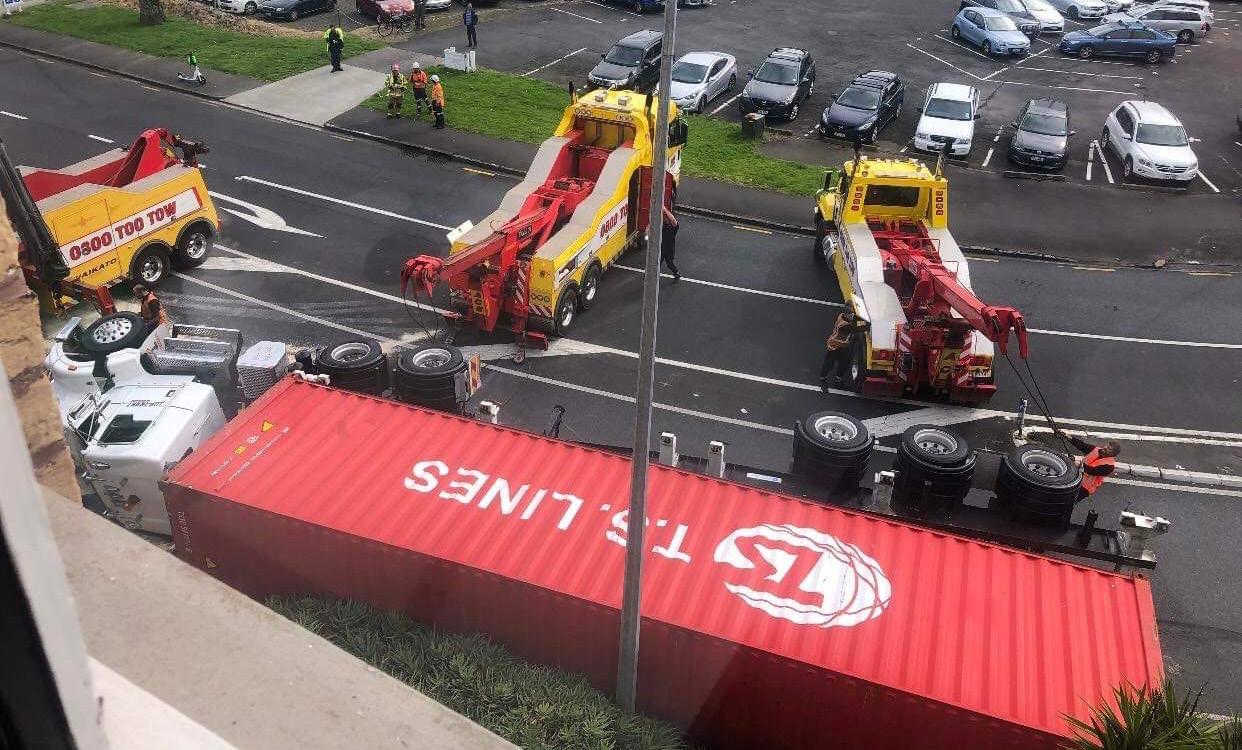
www.autohub.co +64 9 411 7425 info@autohub.co.nz GIVE AUTOHUB A CALL SAFER BY RO-RO GLOBAL VEHICLE LOGISTICS NZ - JAPAN - AUSTRALIA - UK - SINGAPORE


























































































































